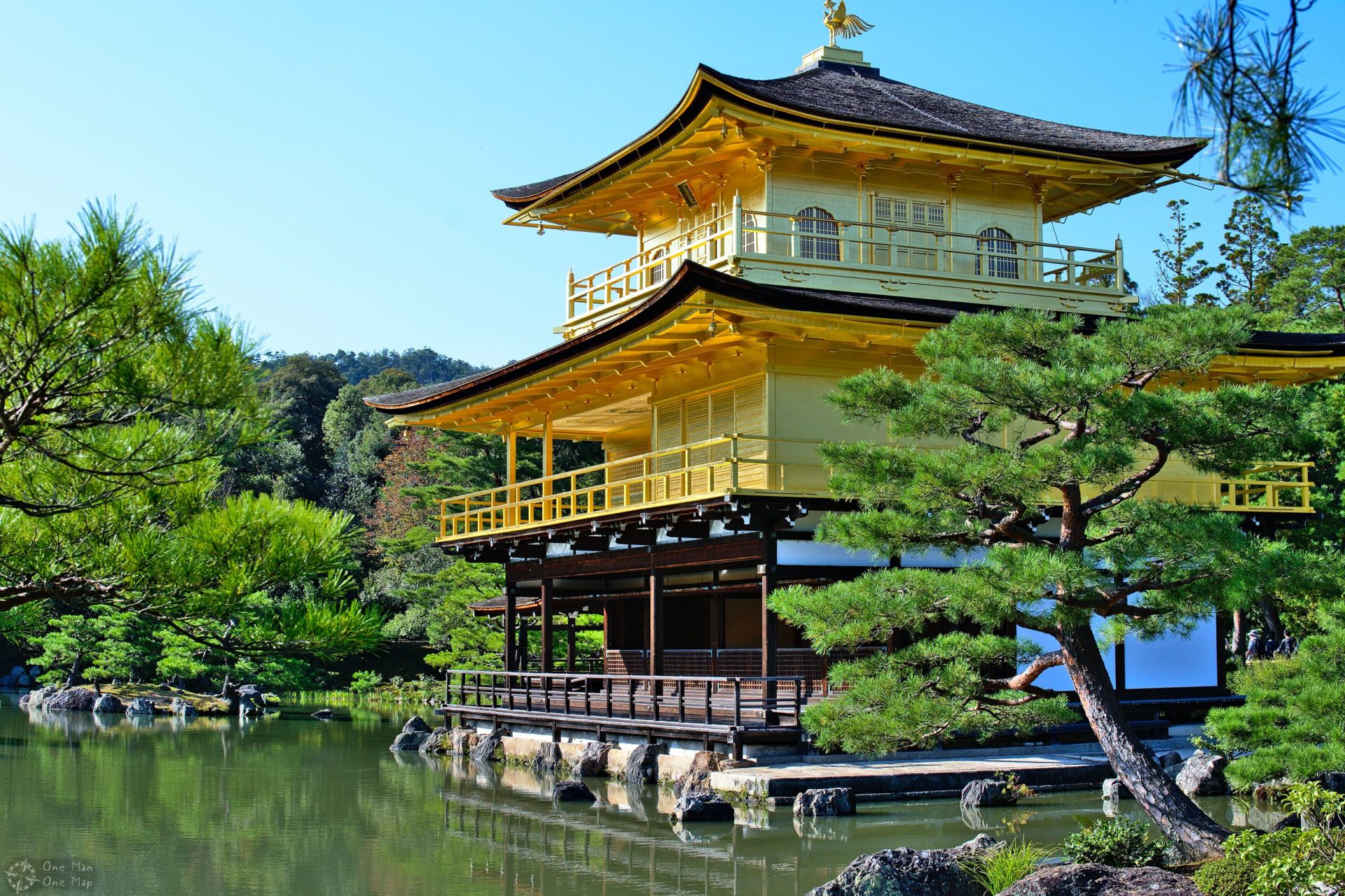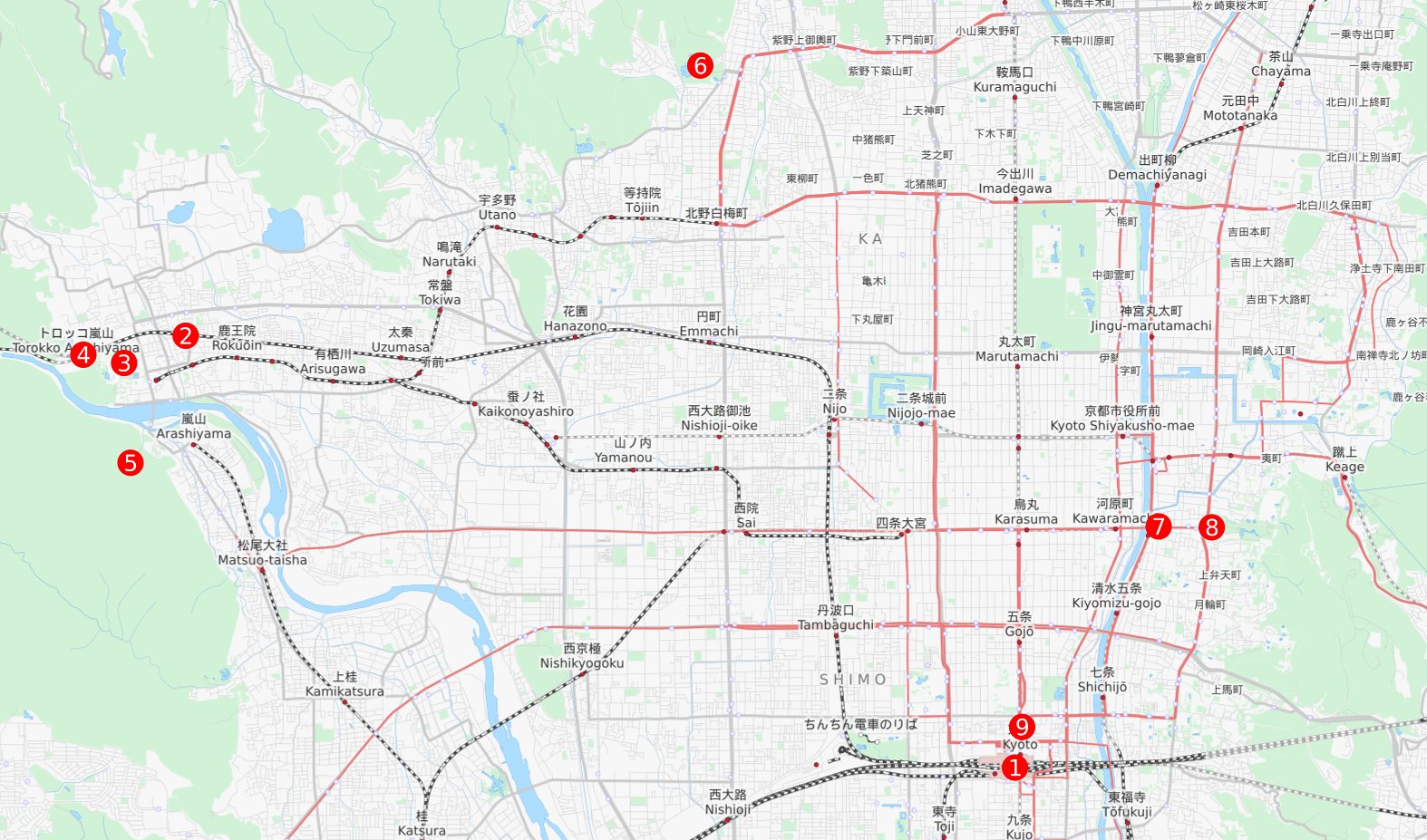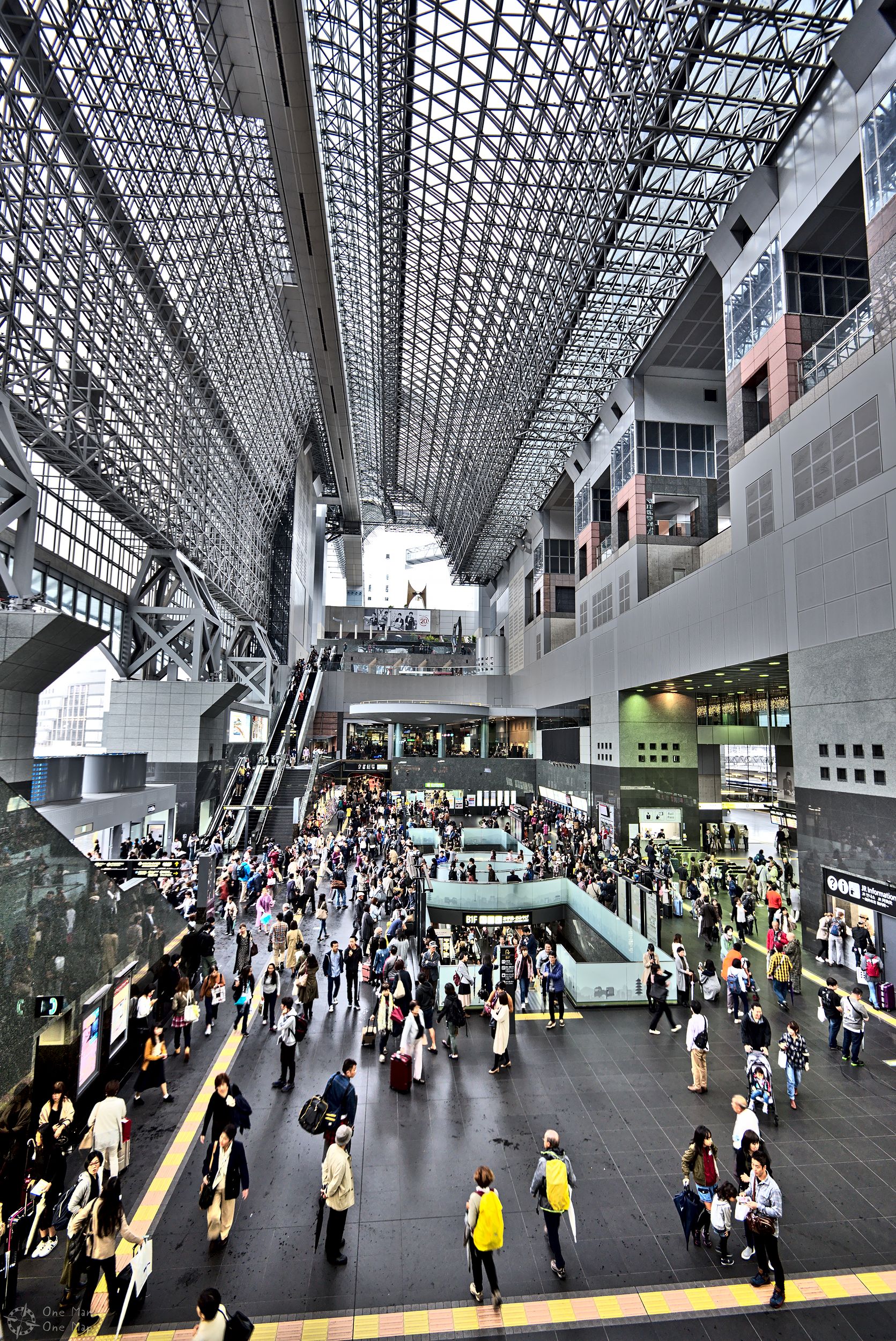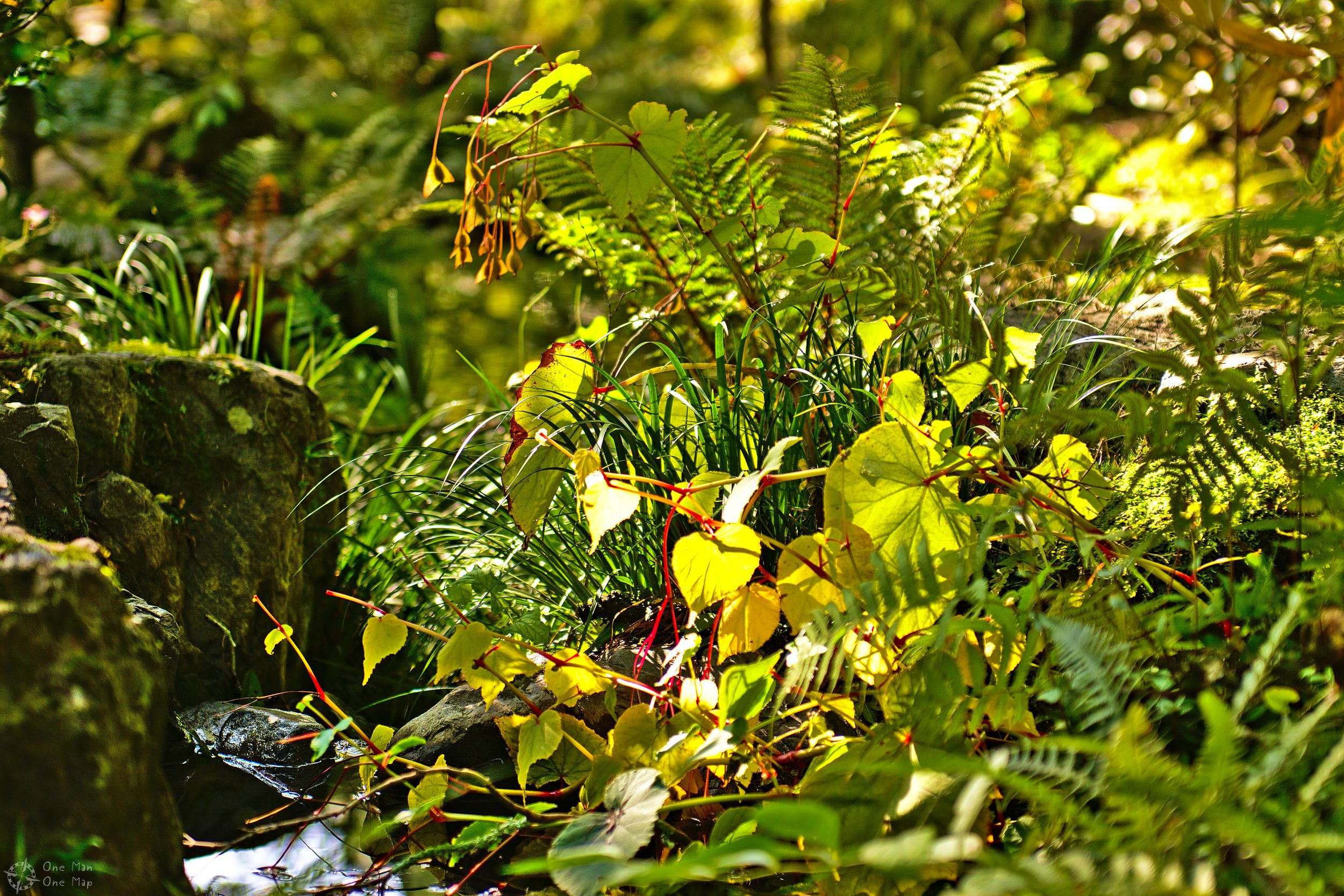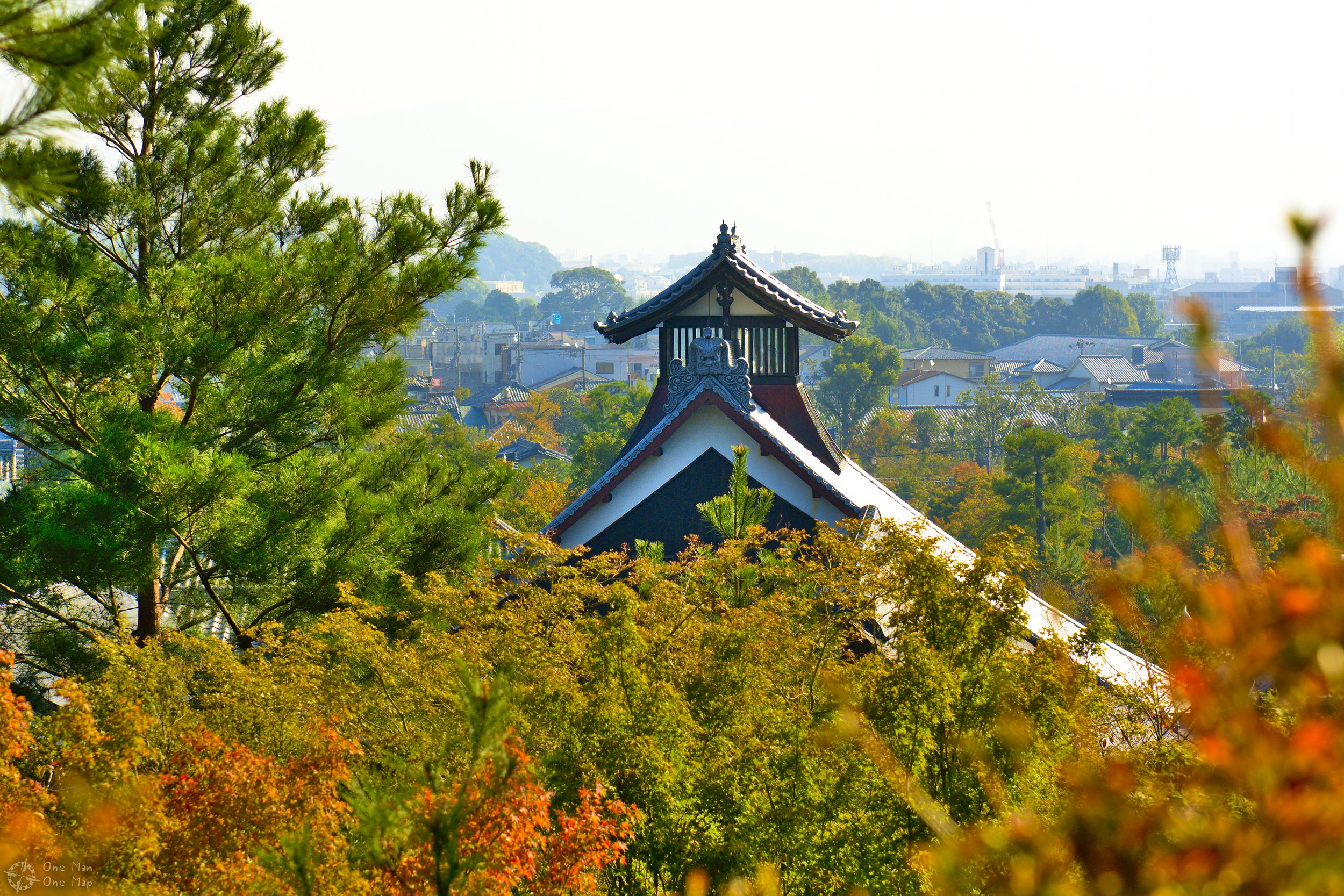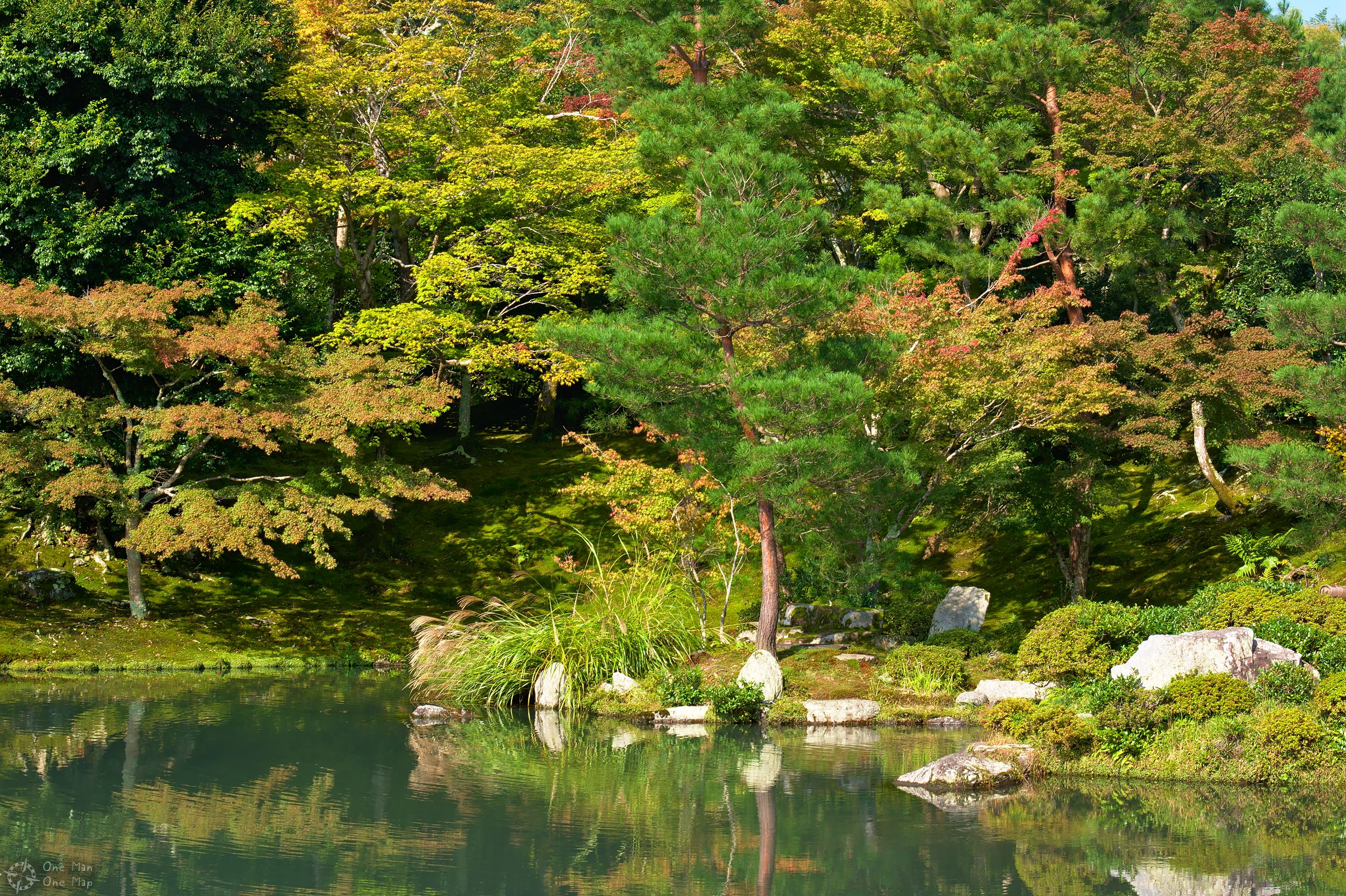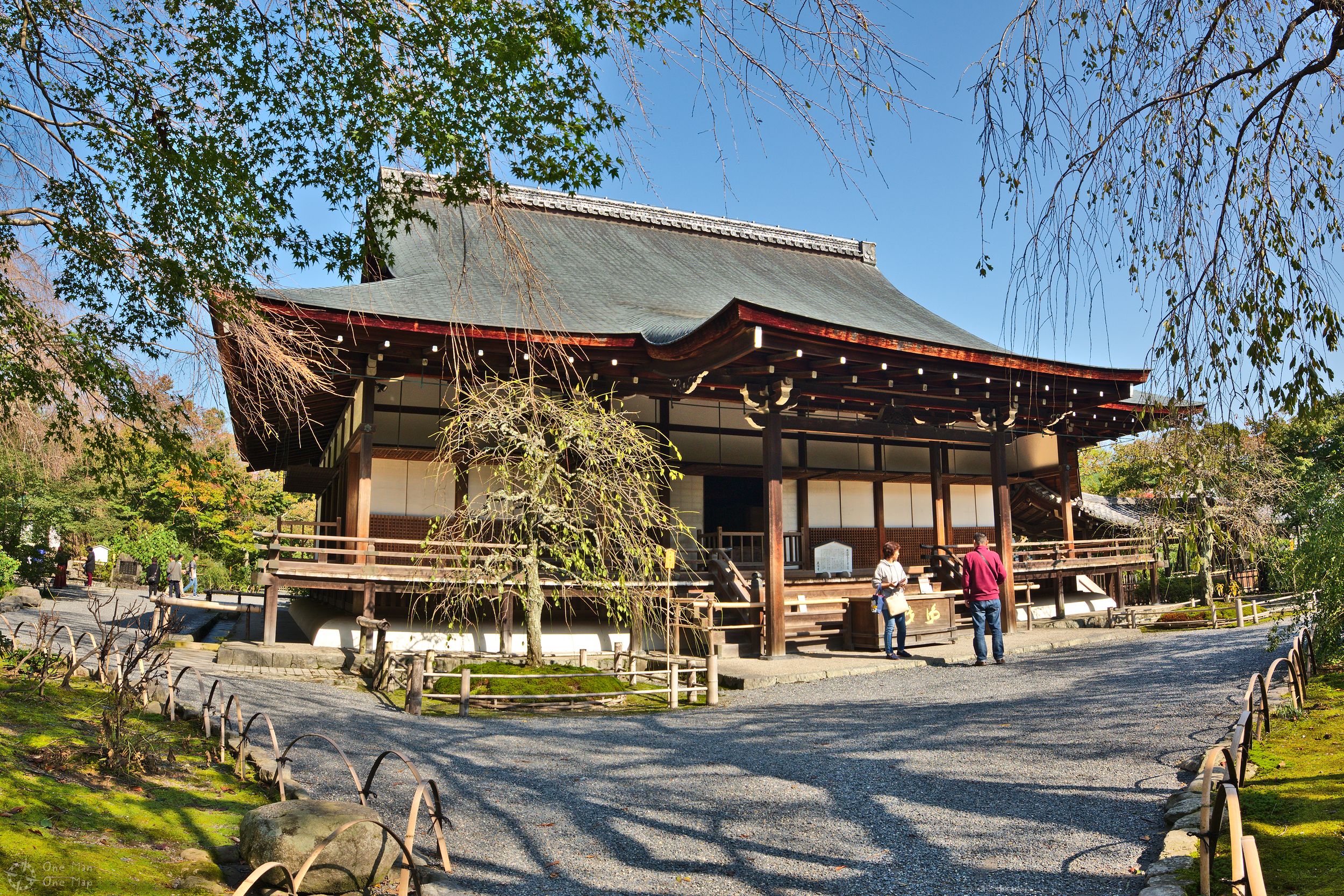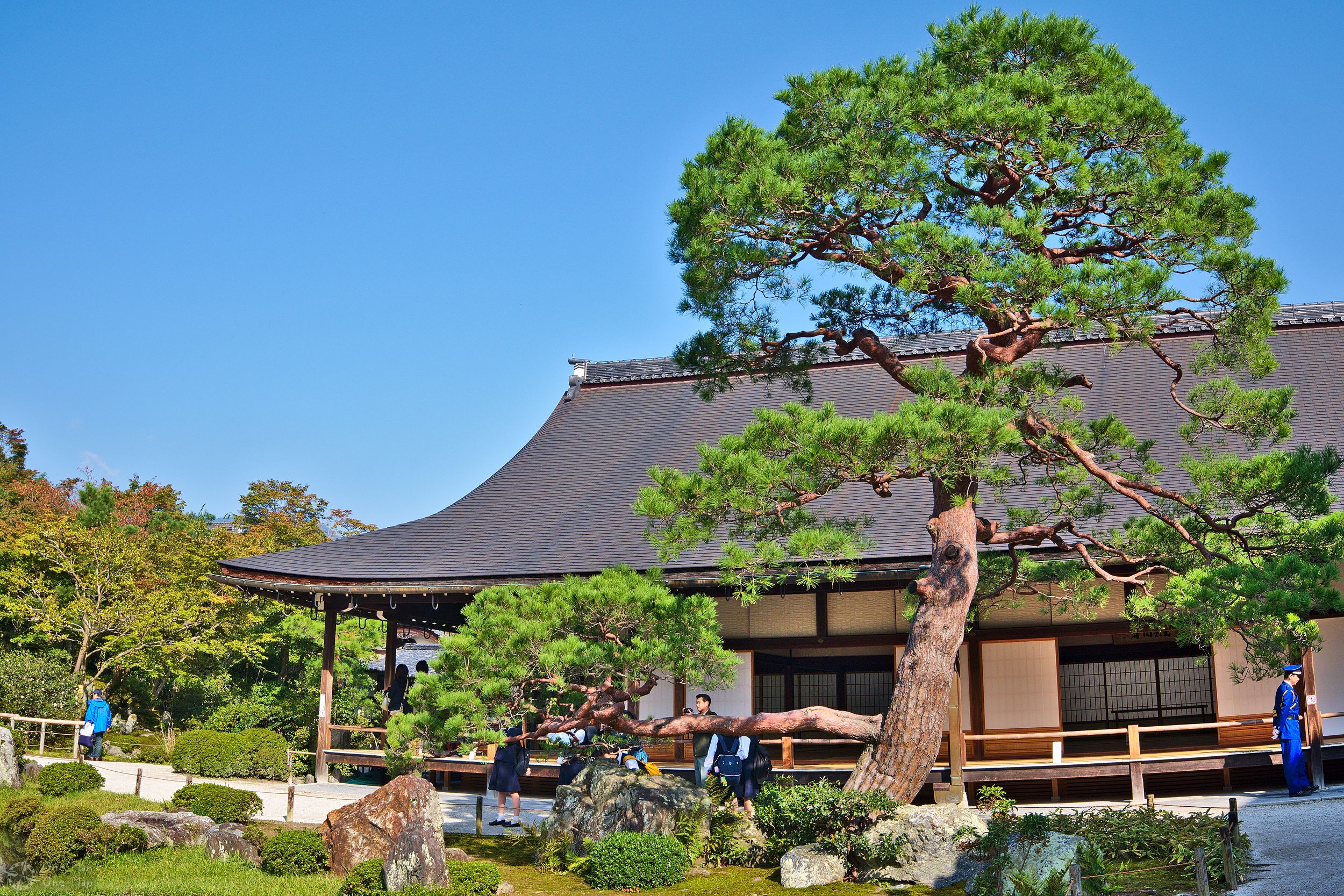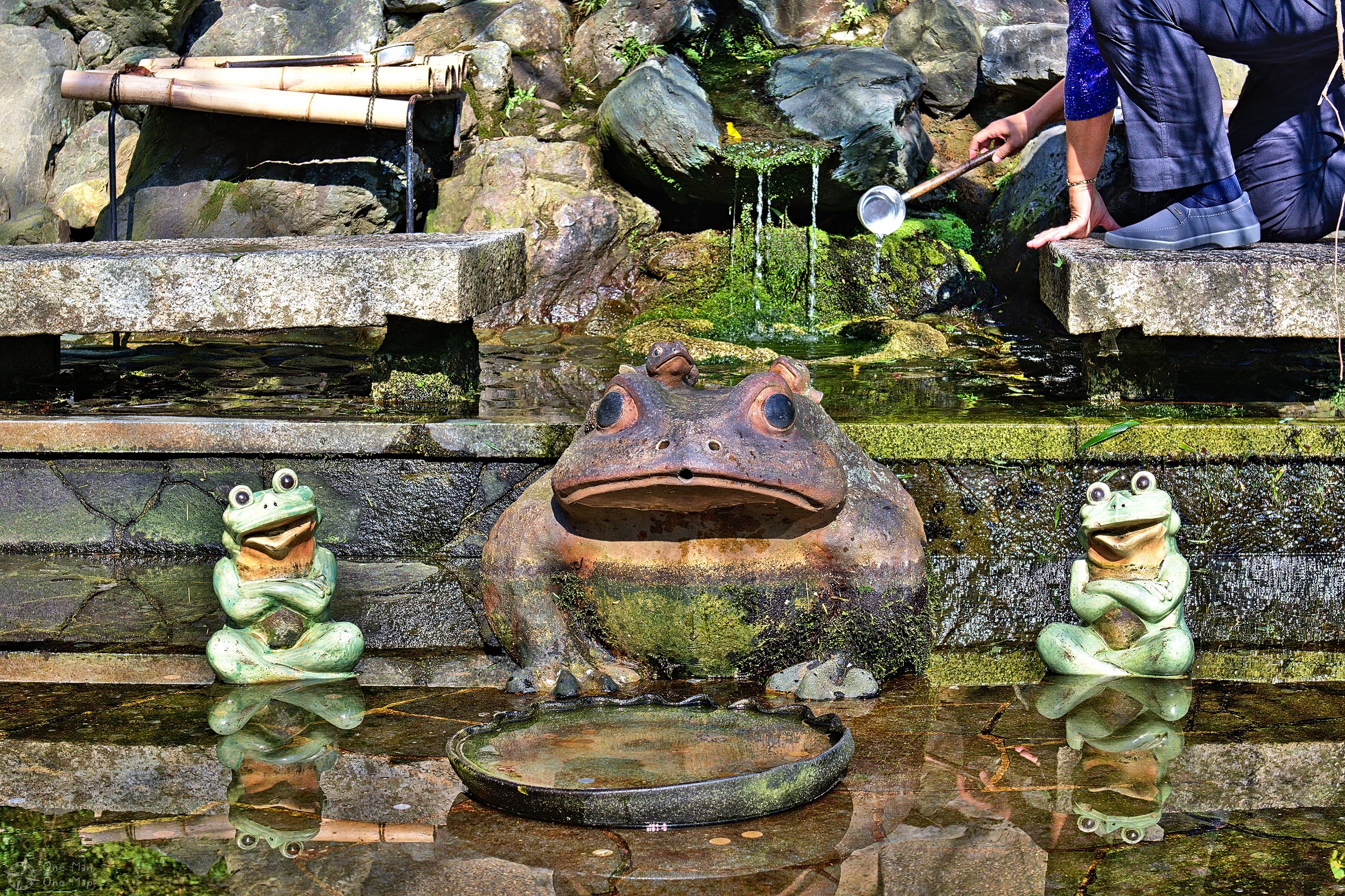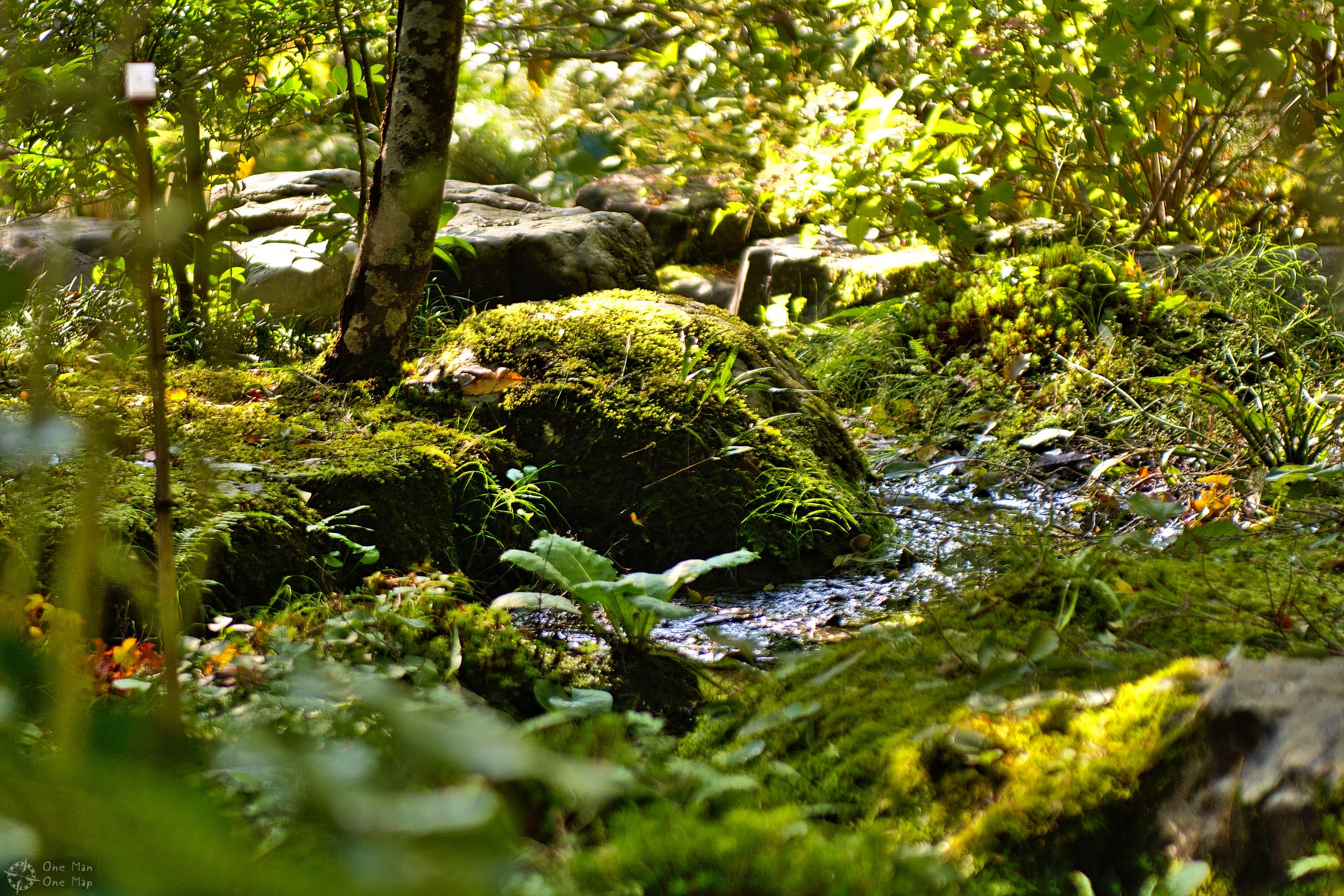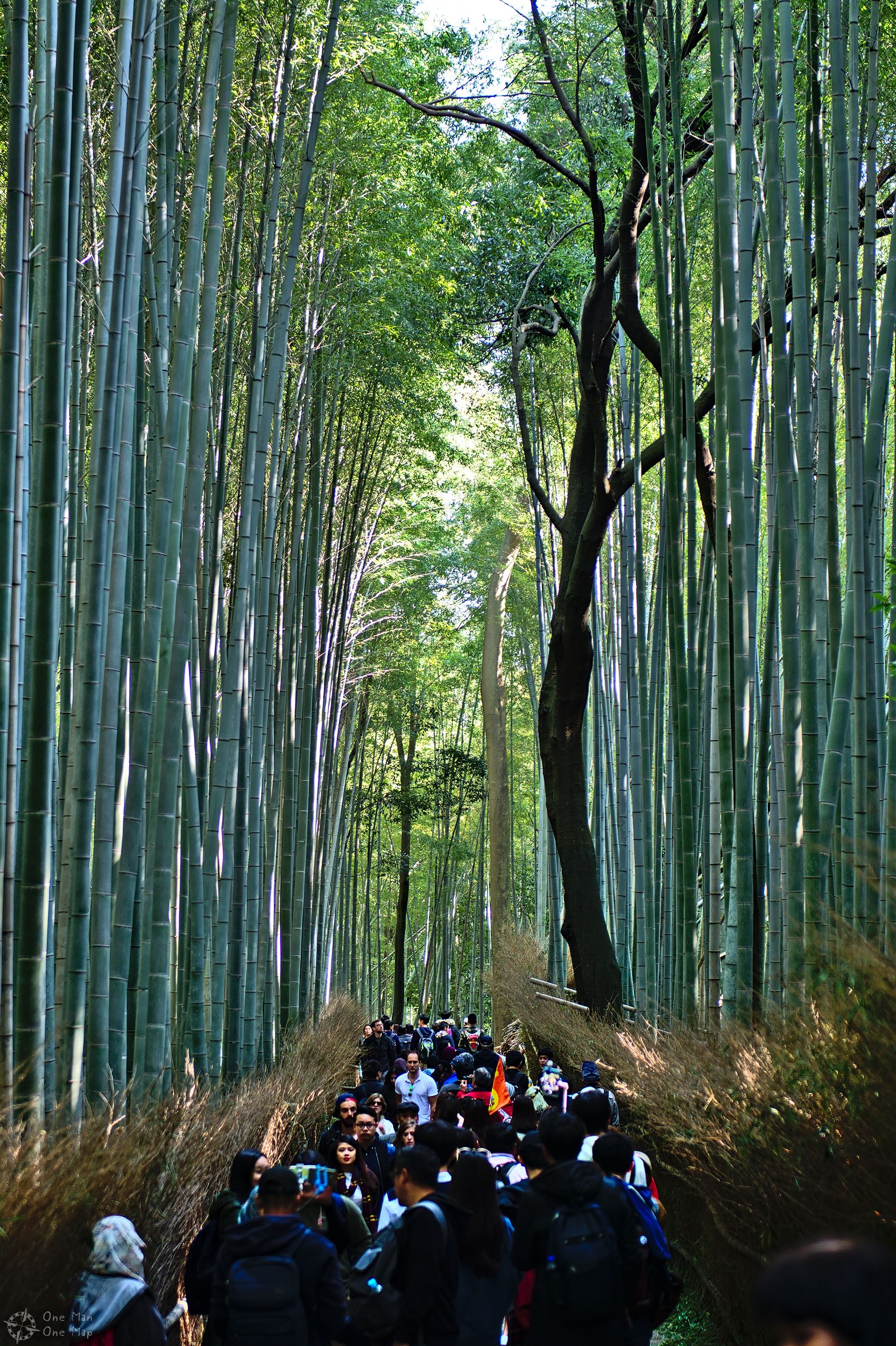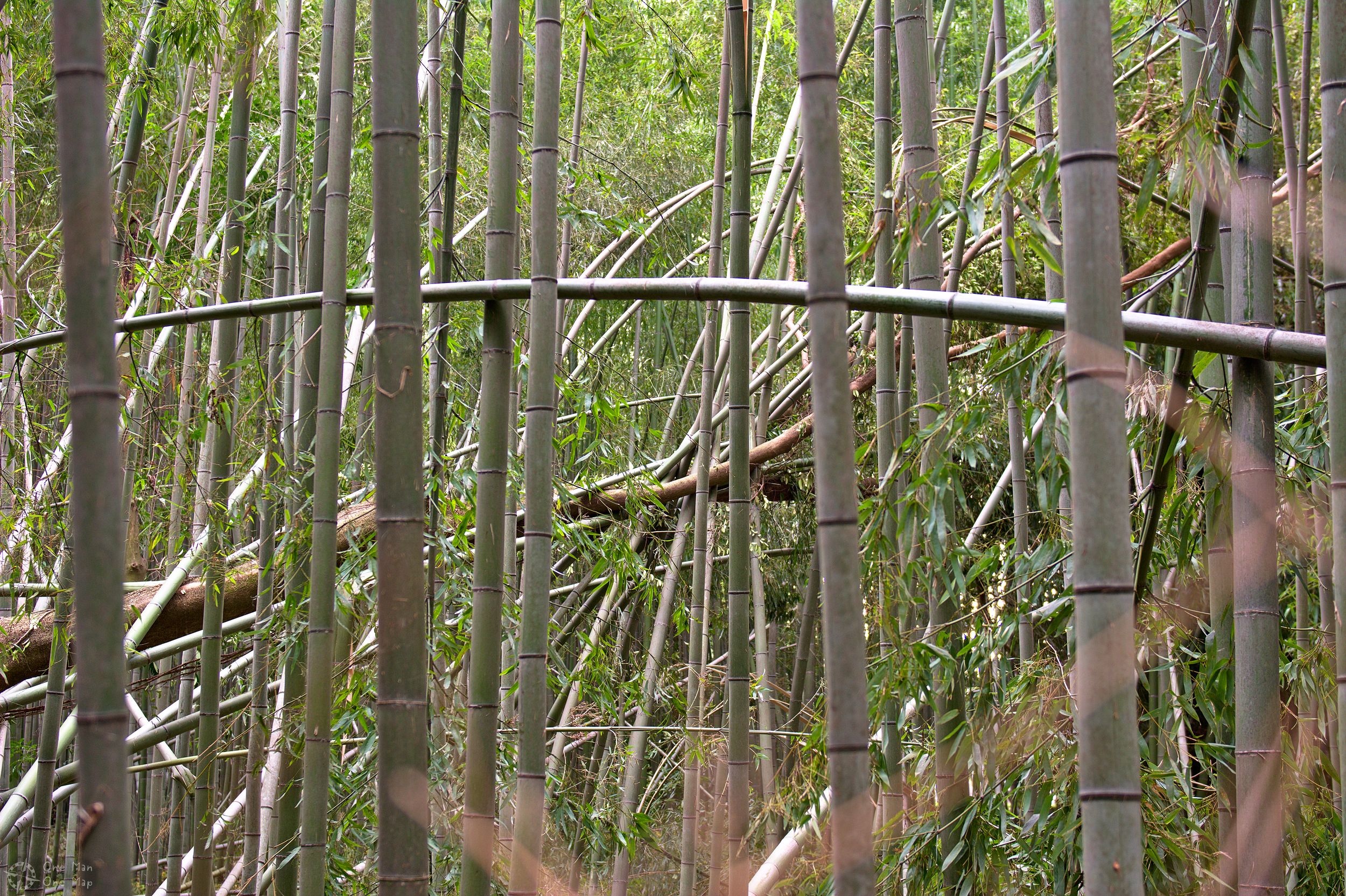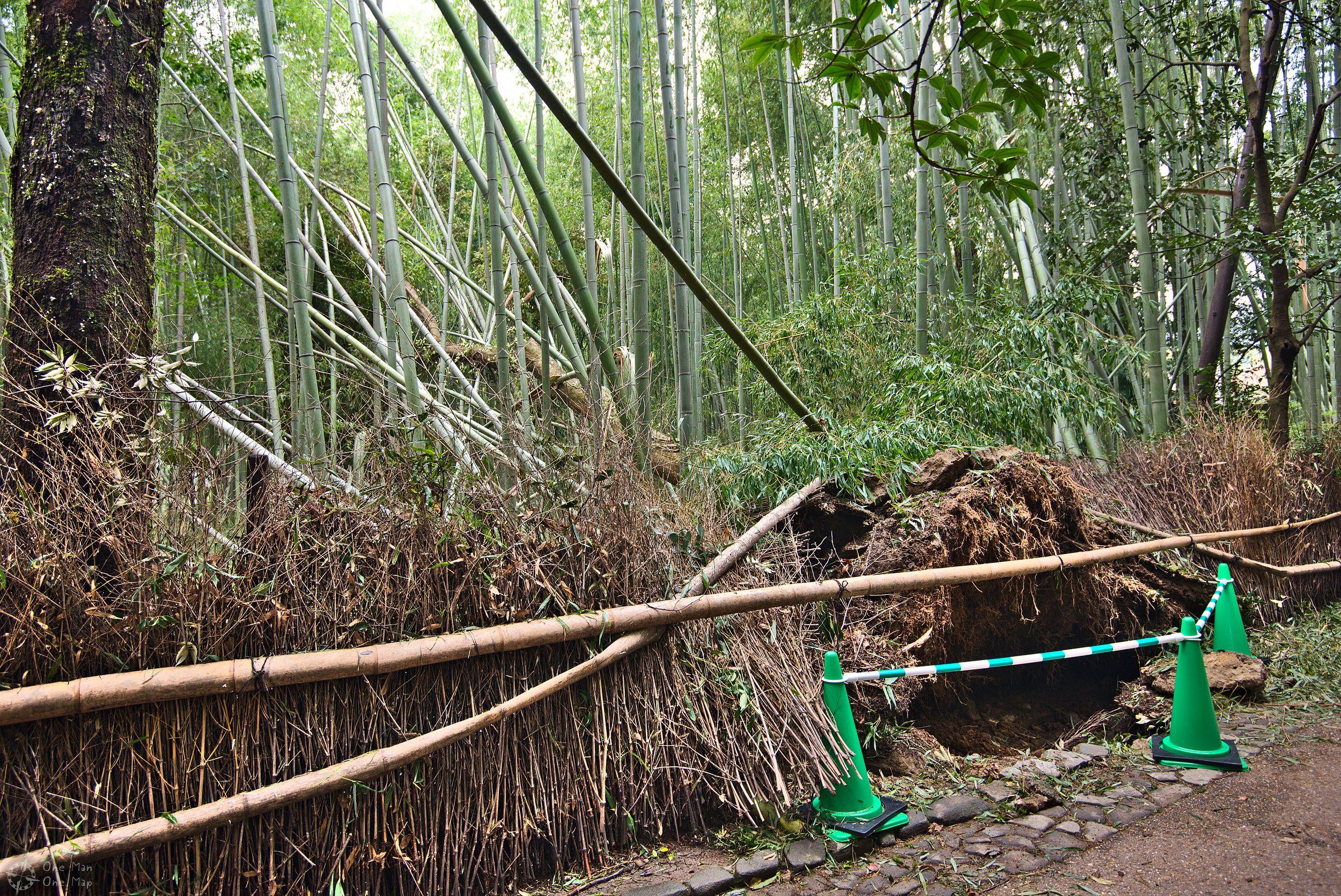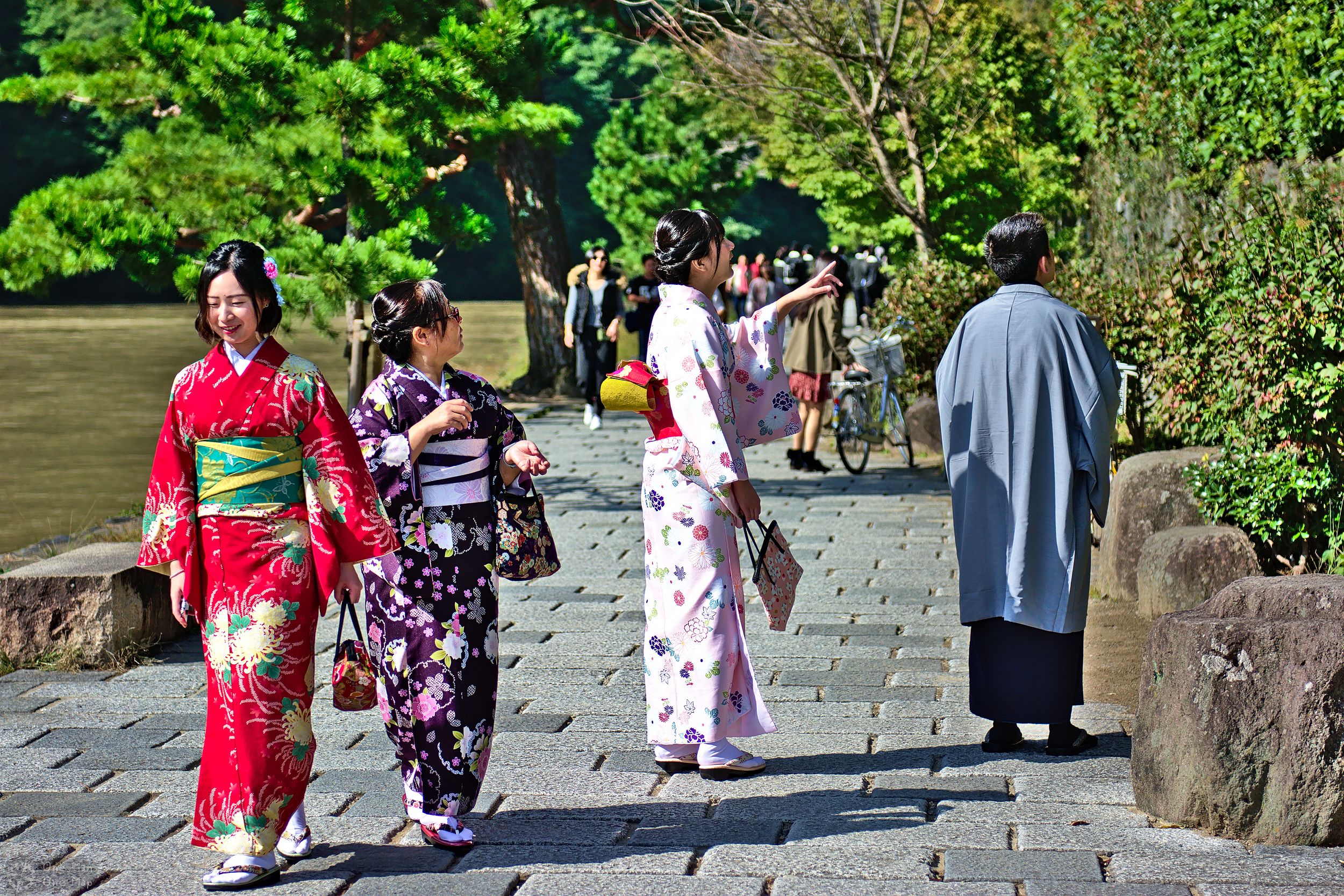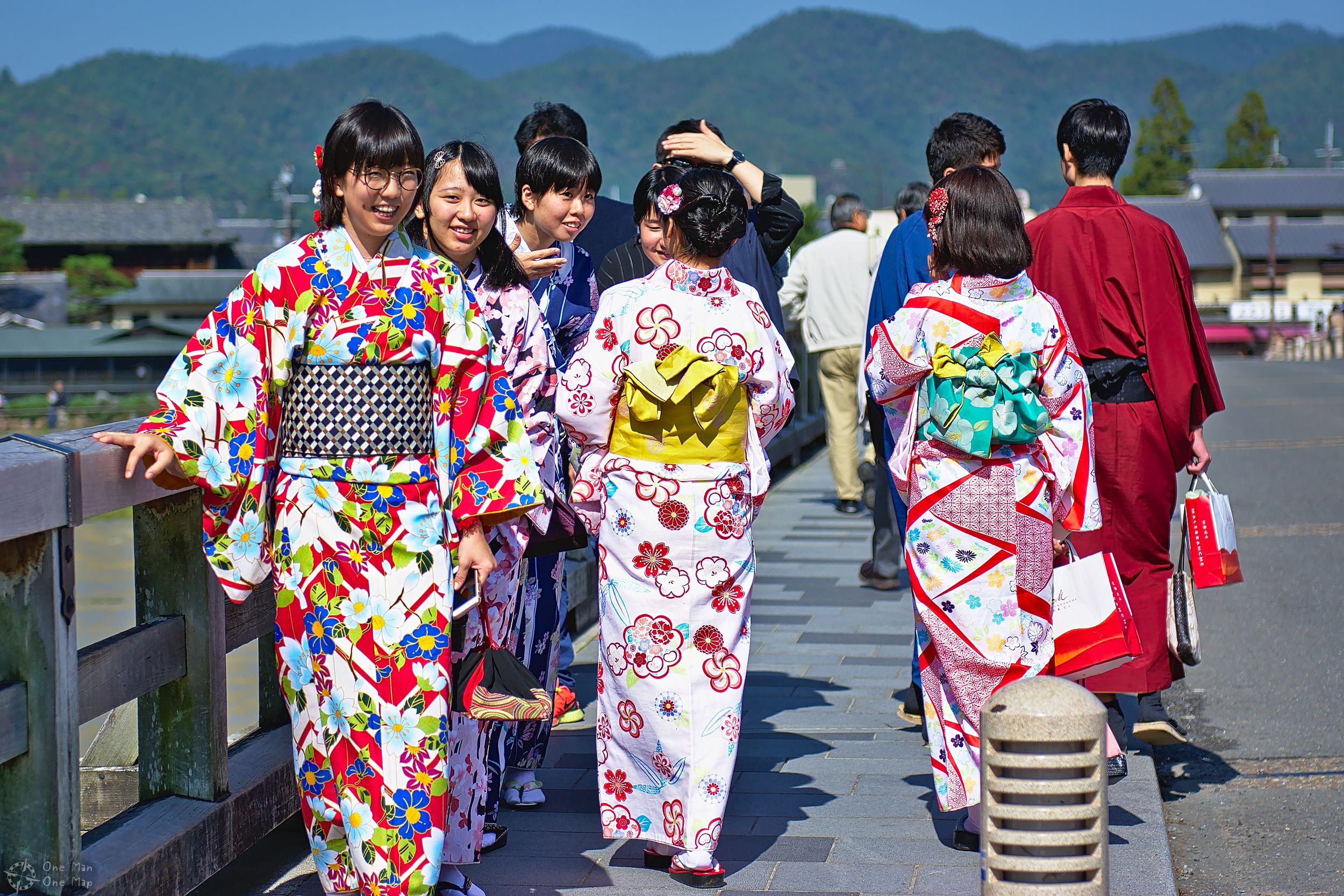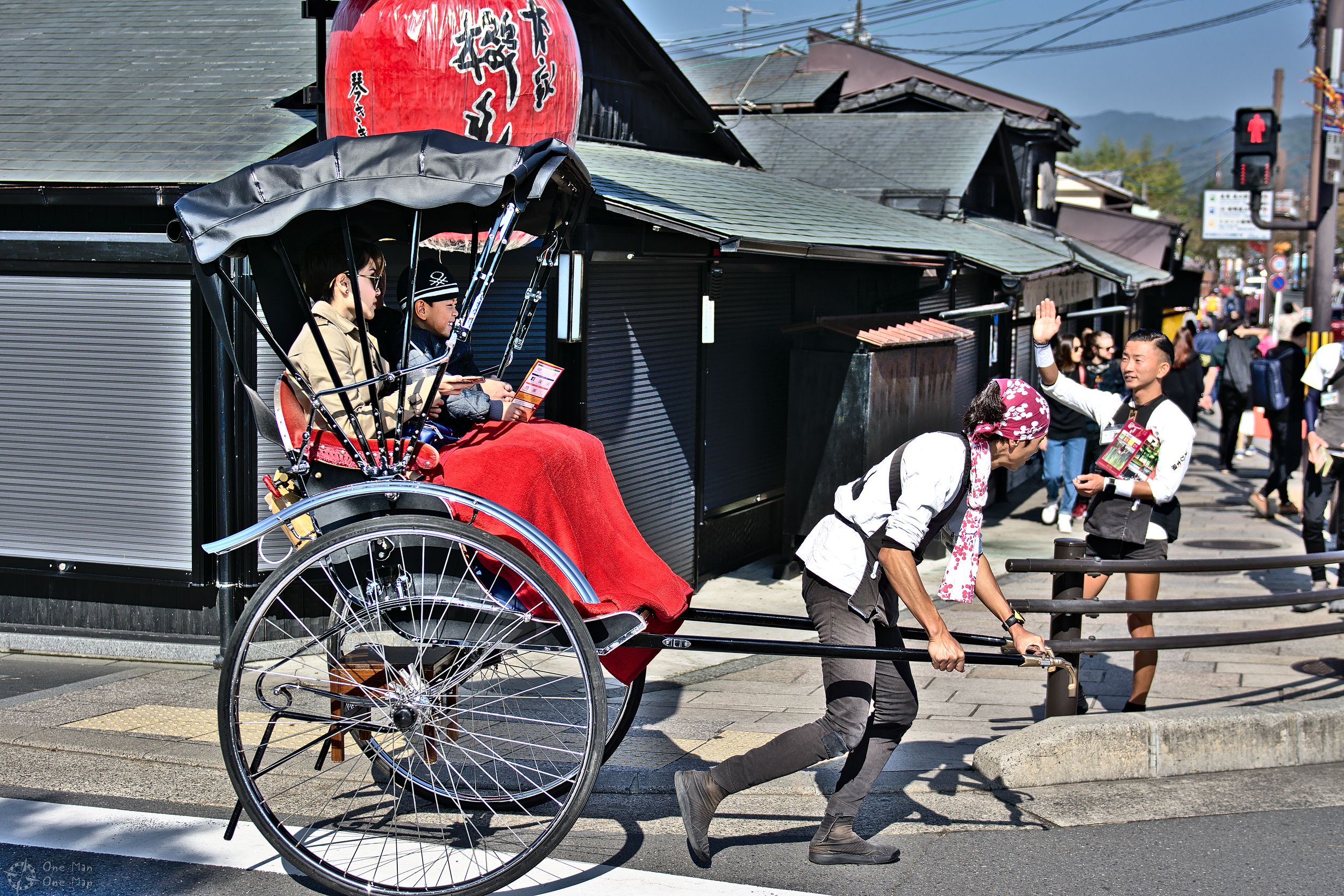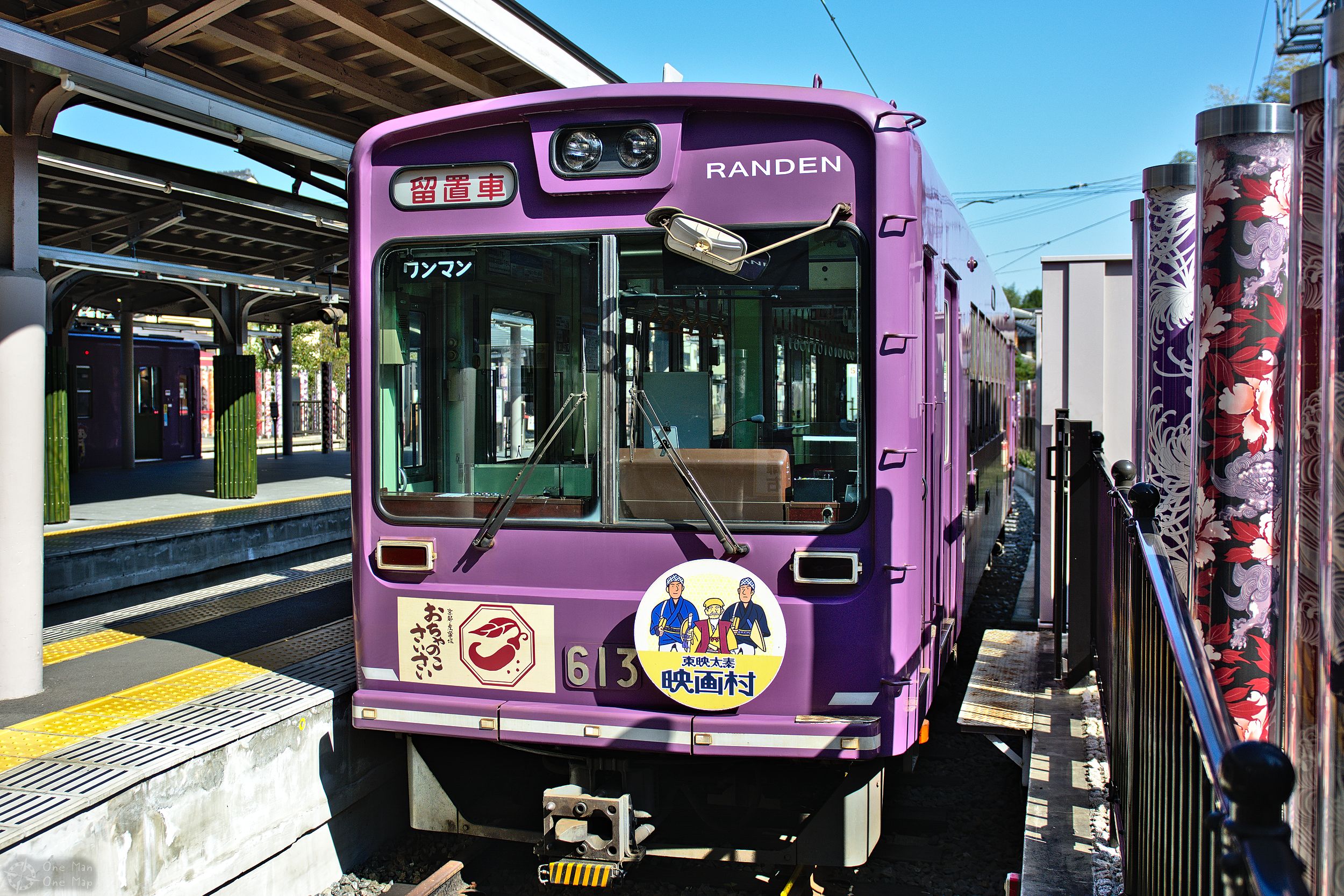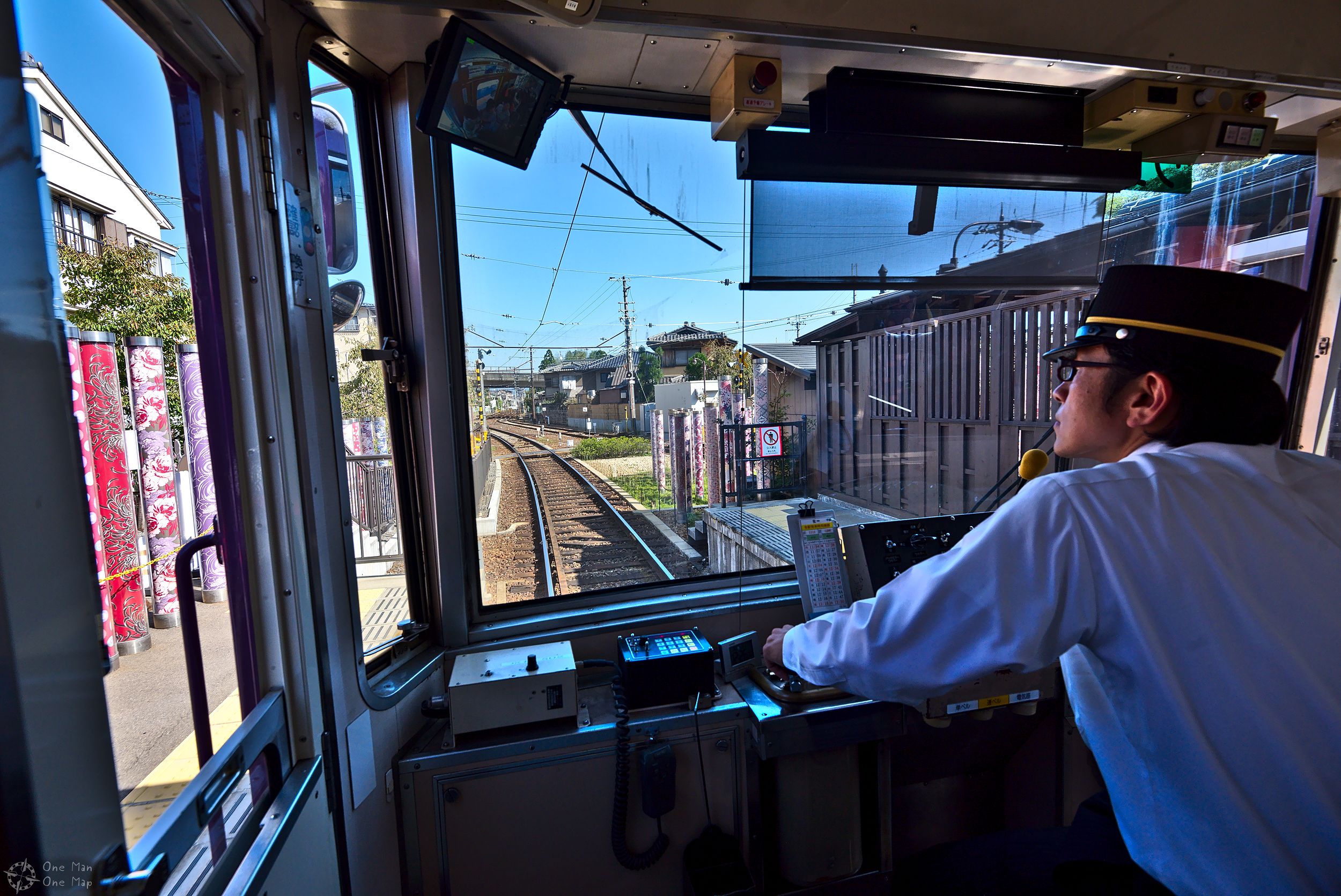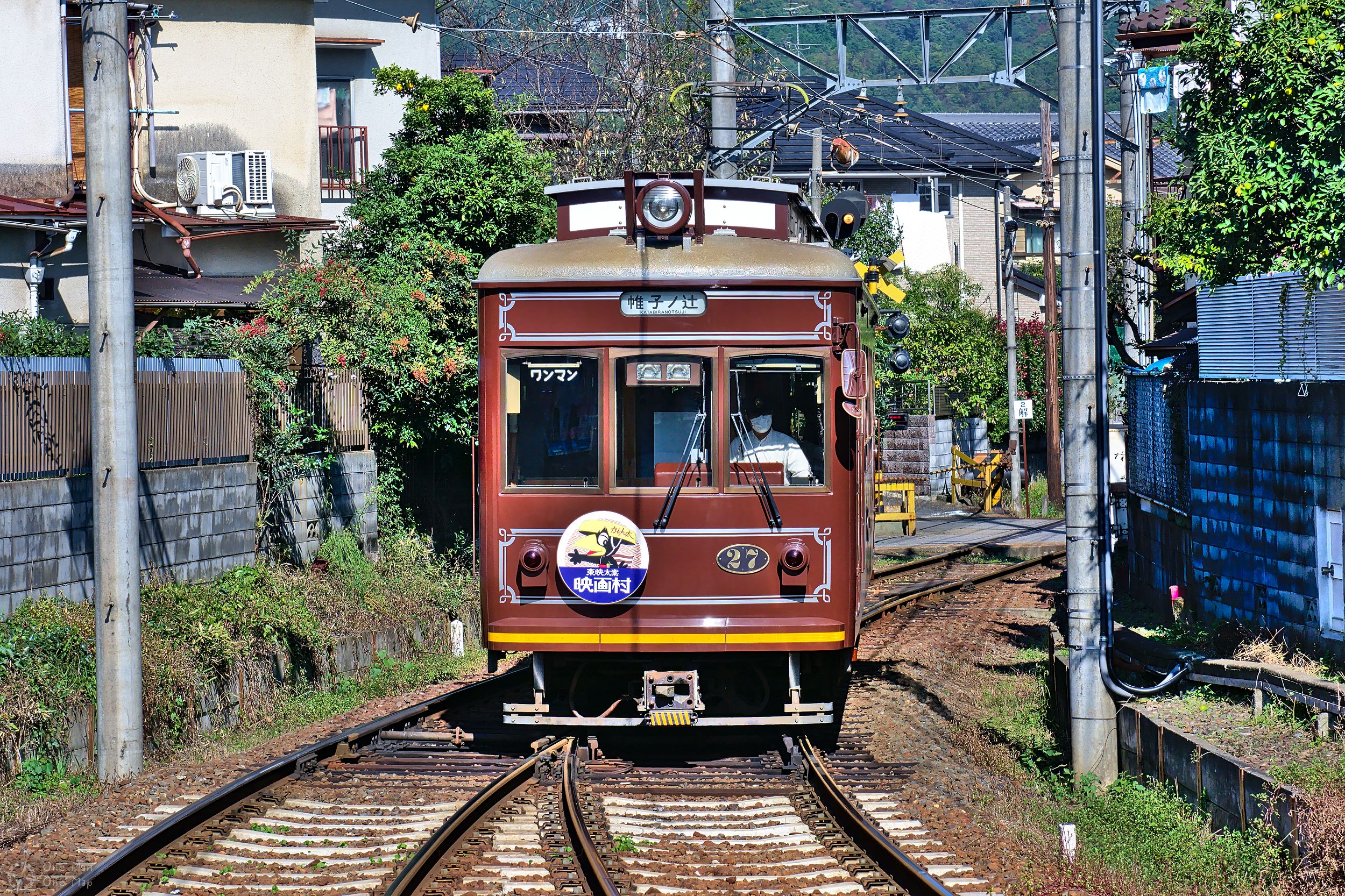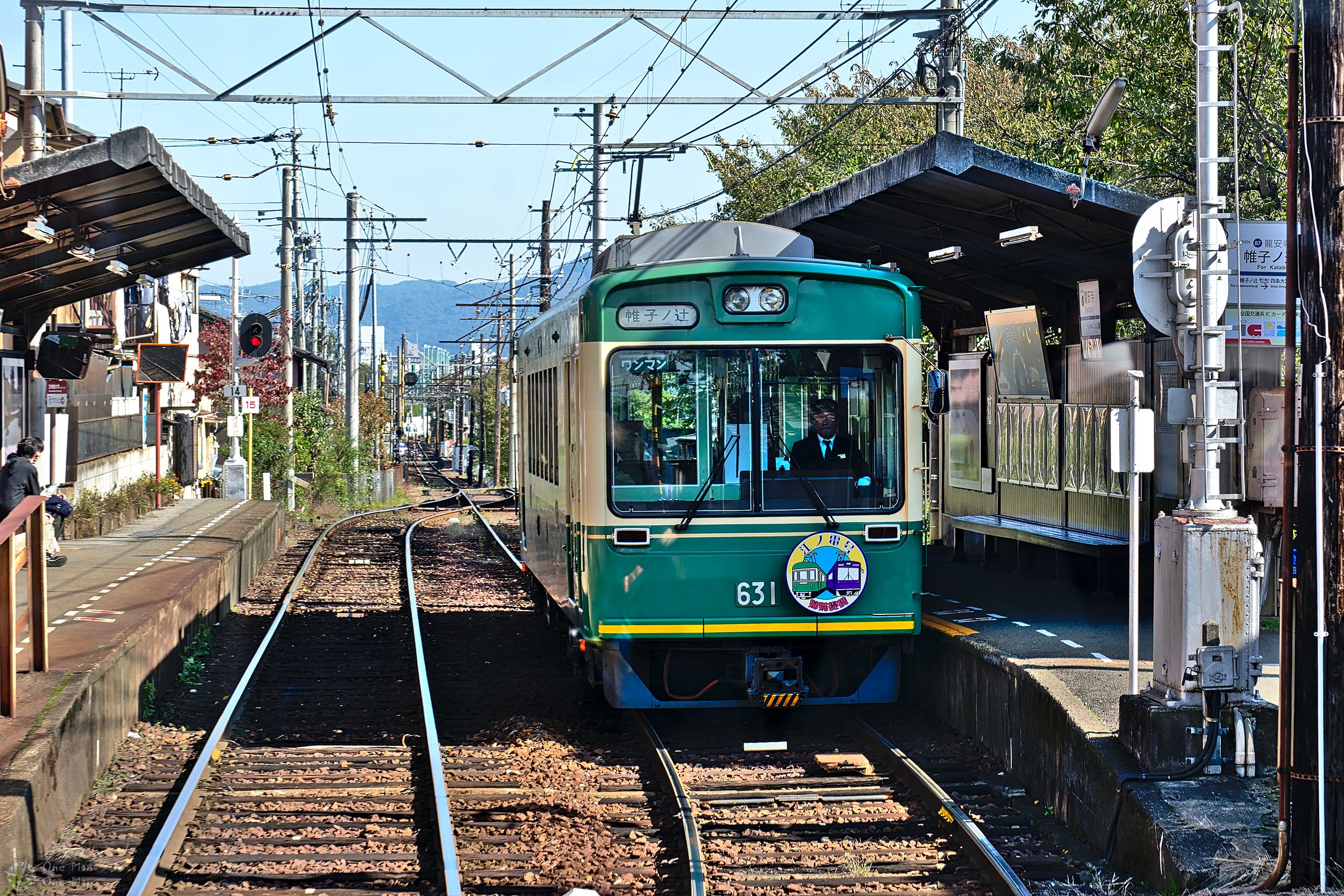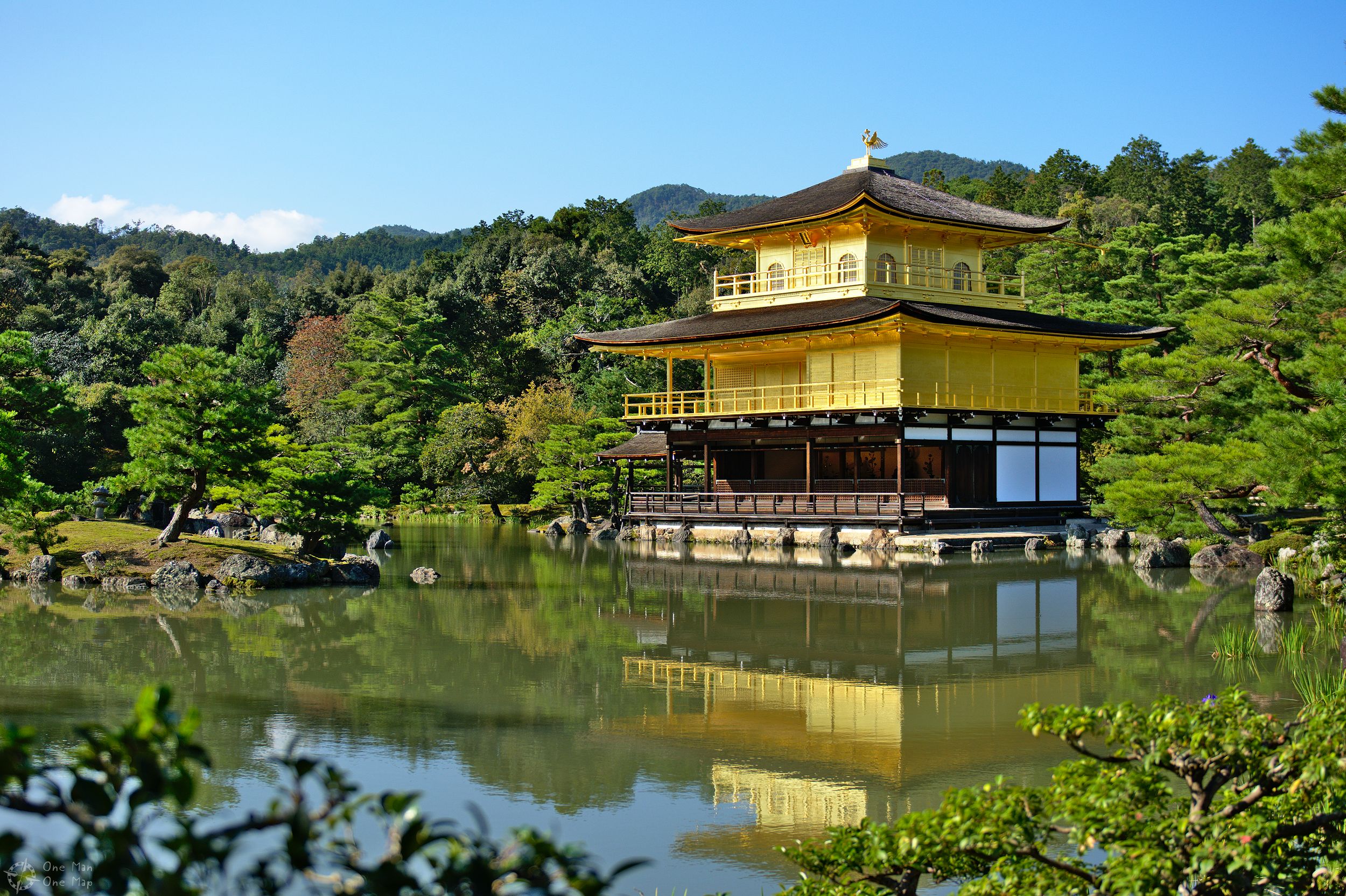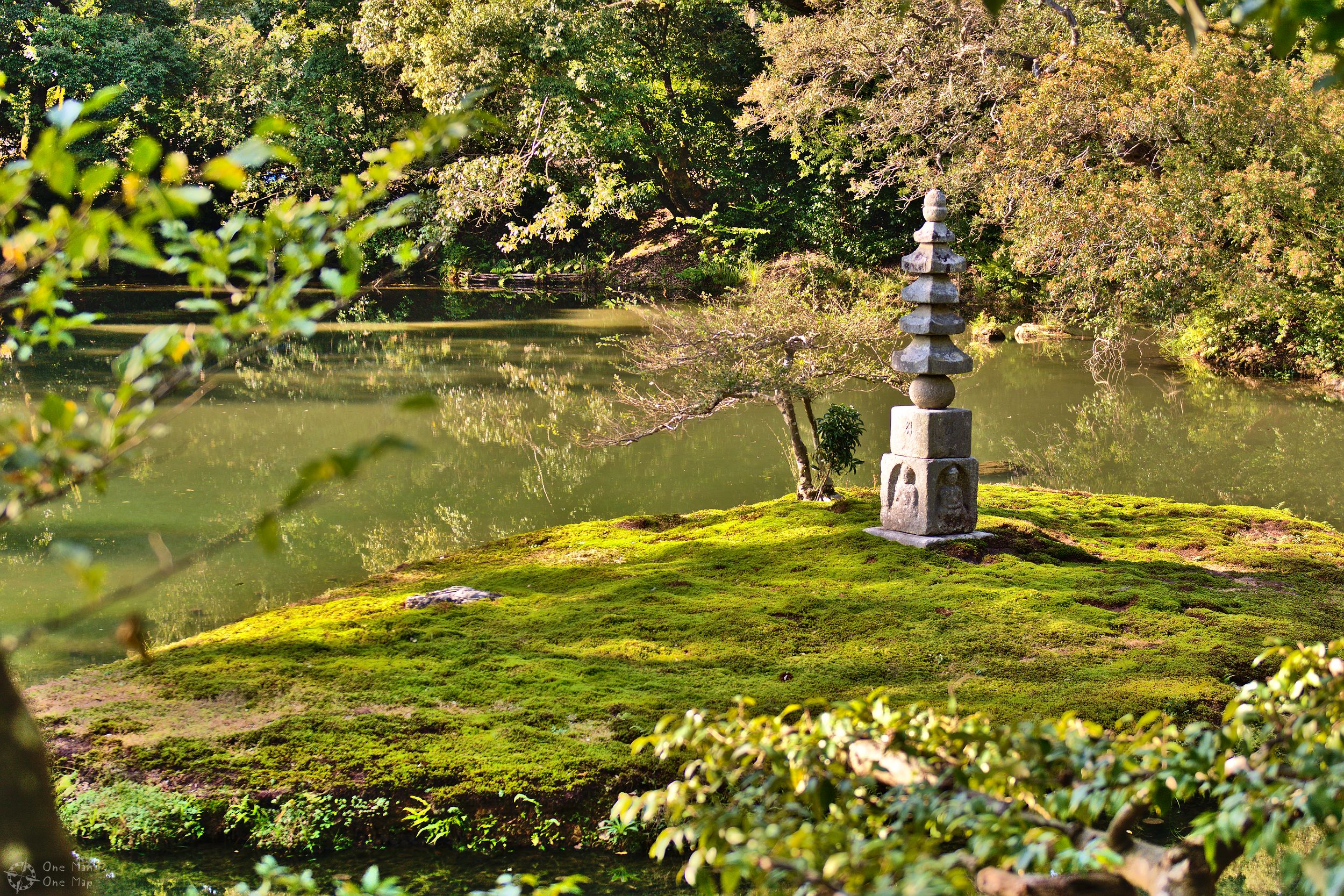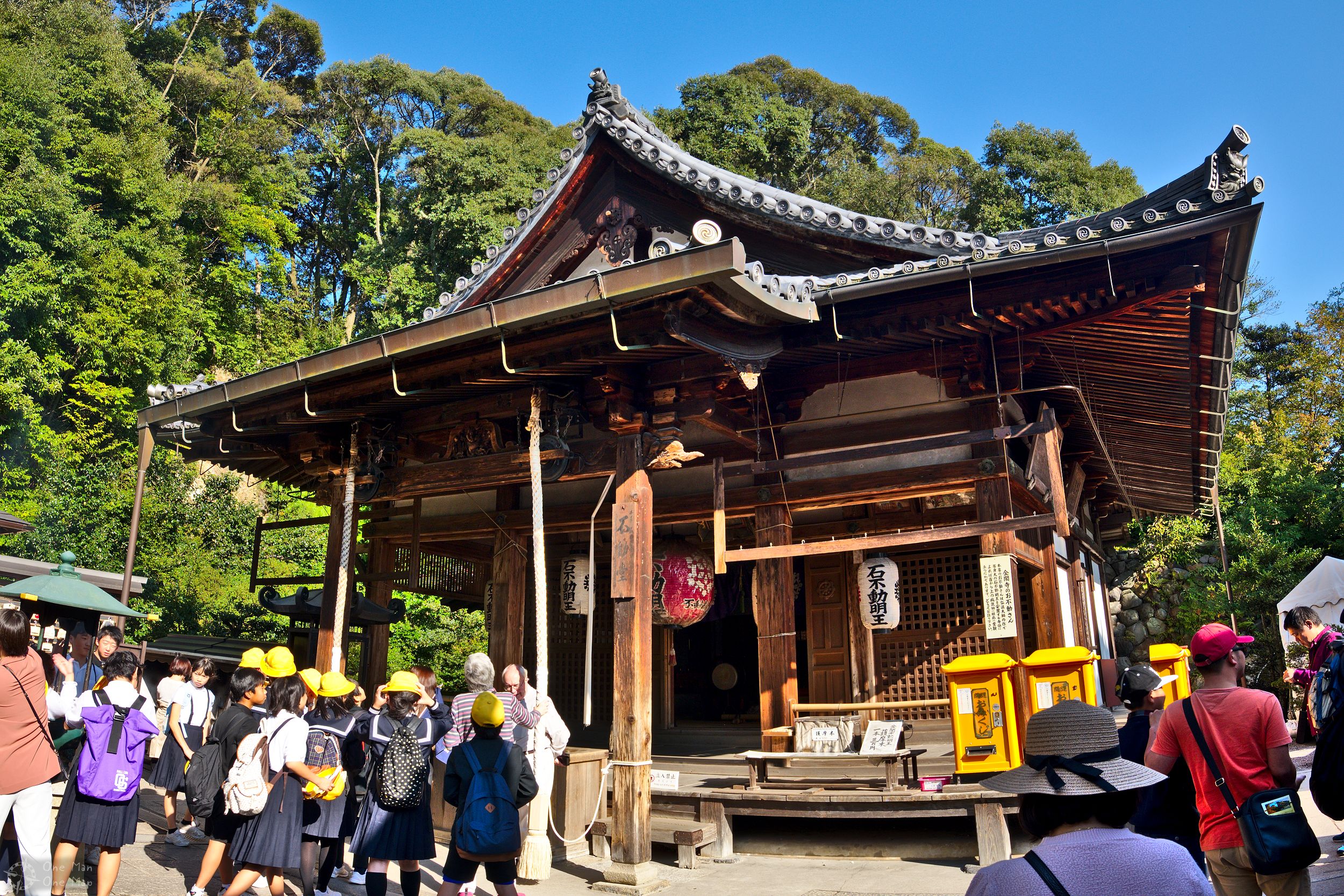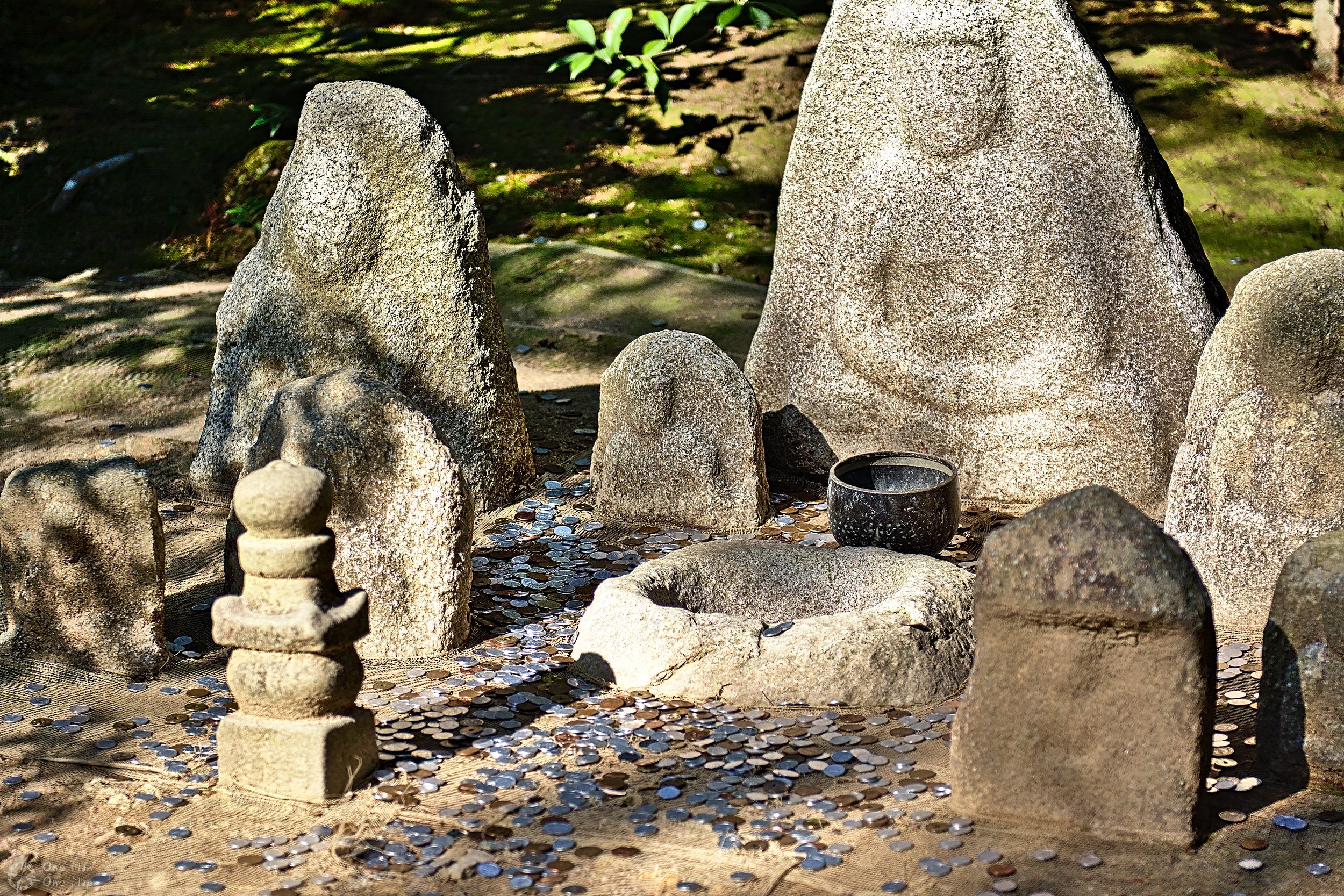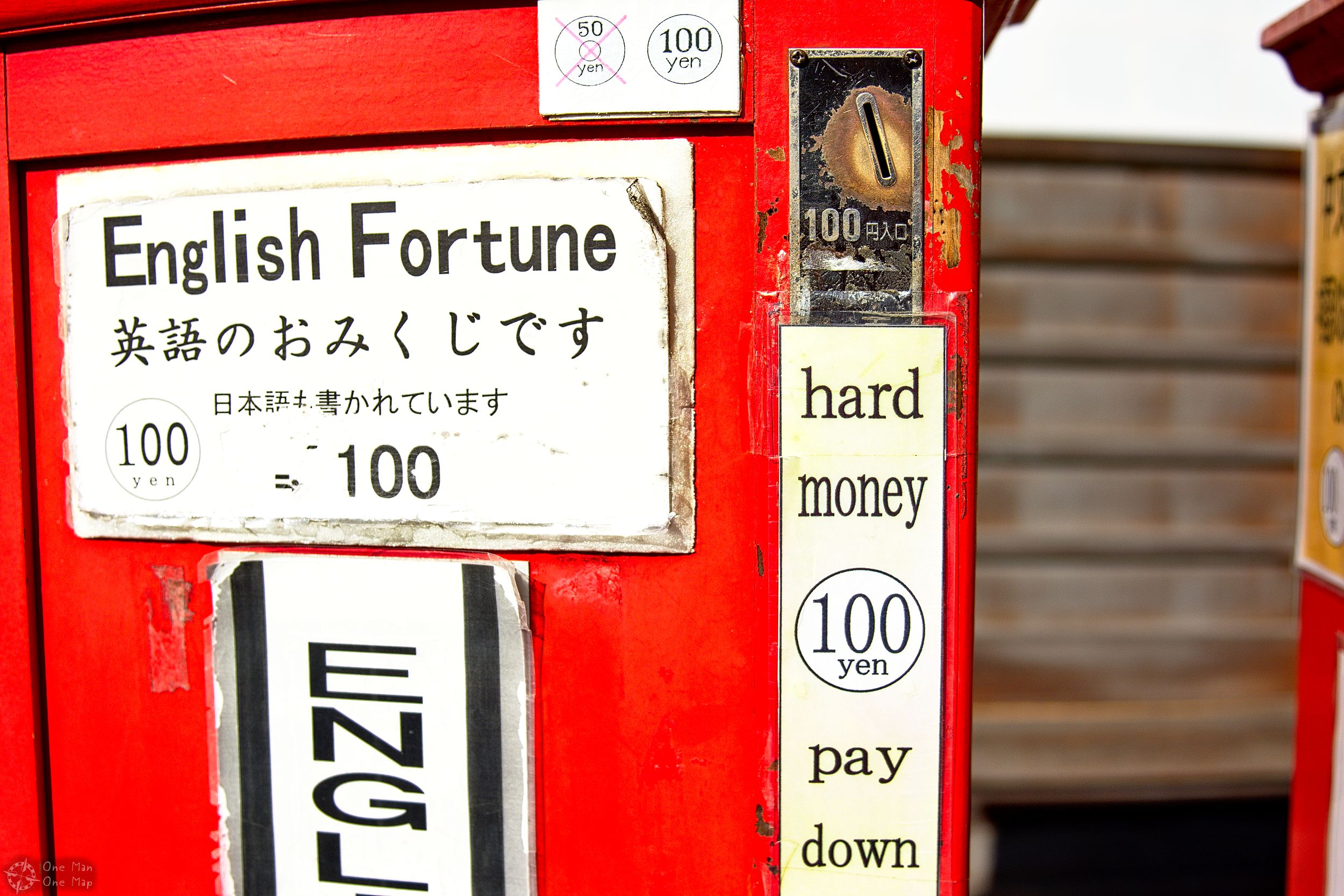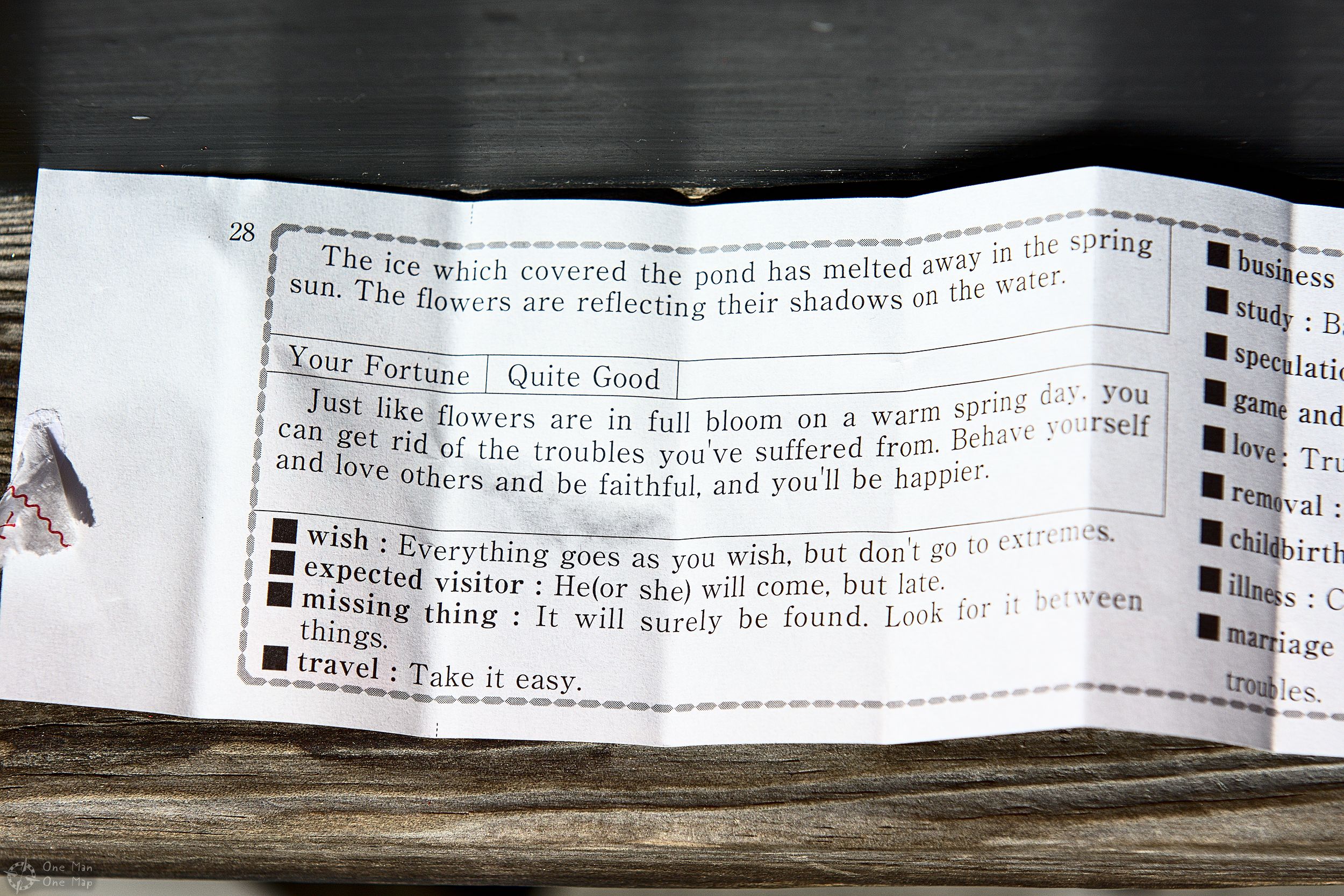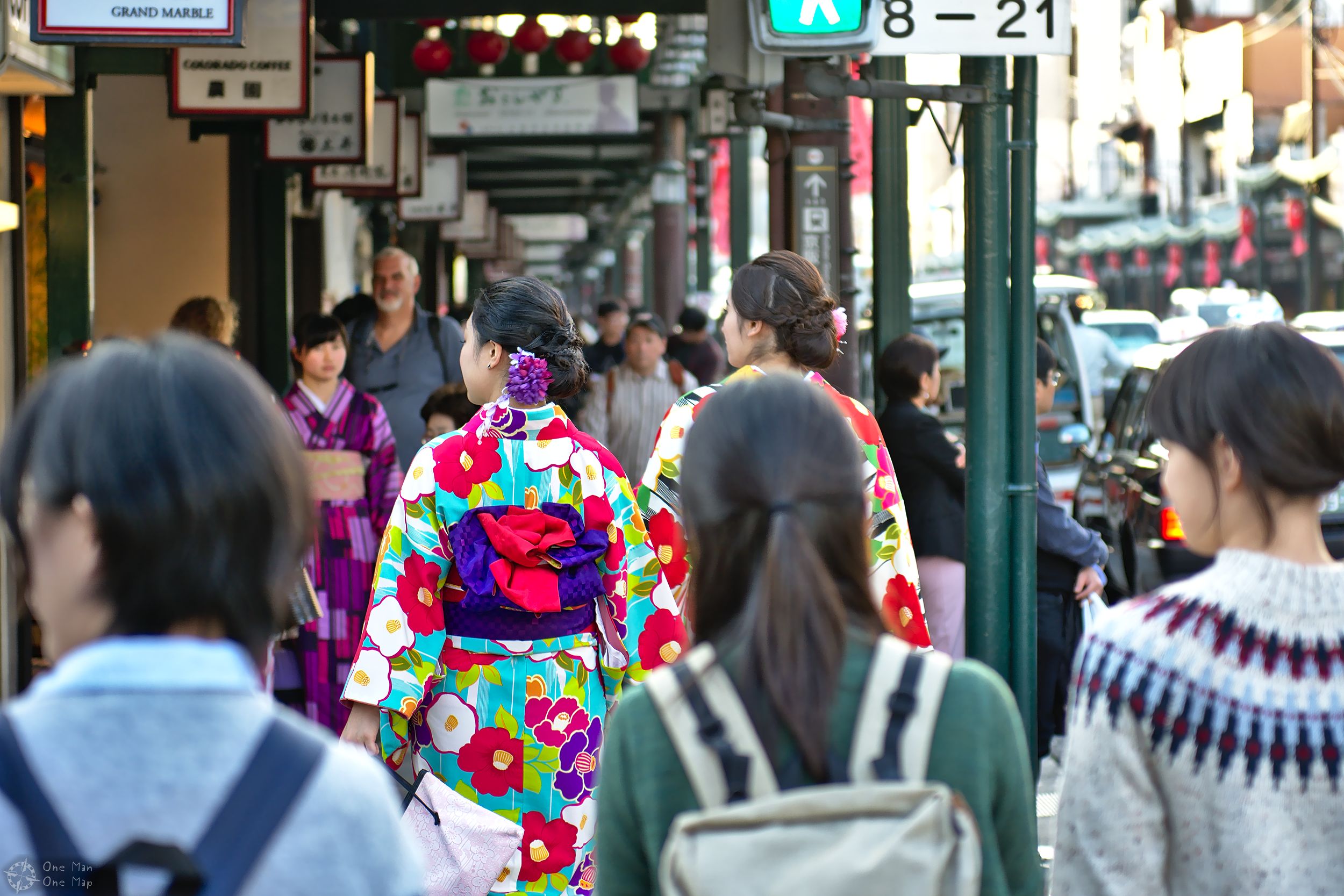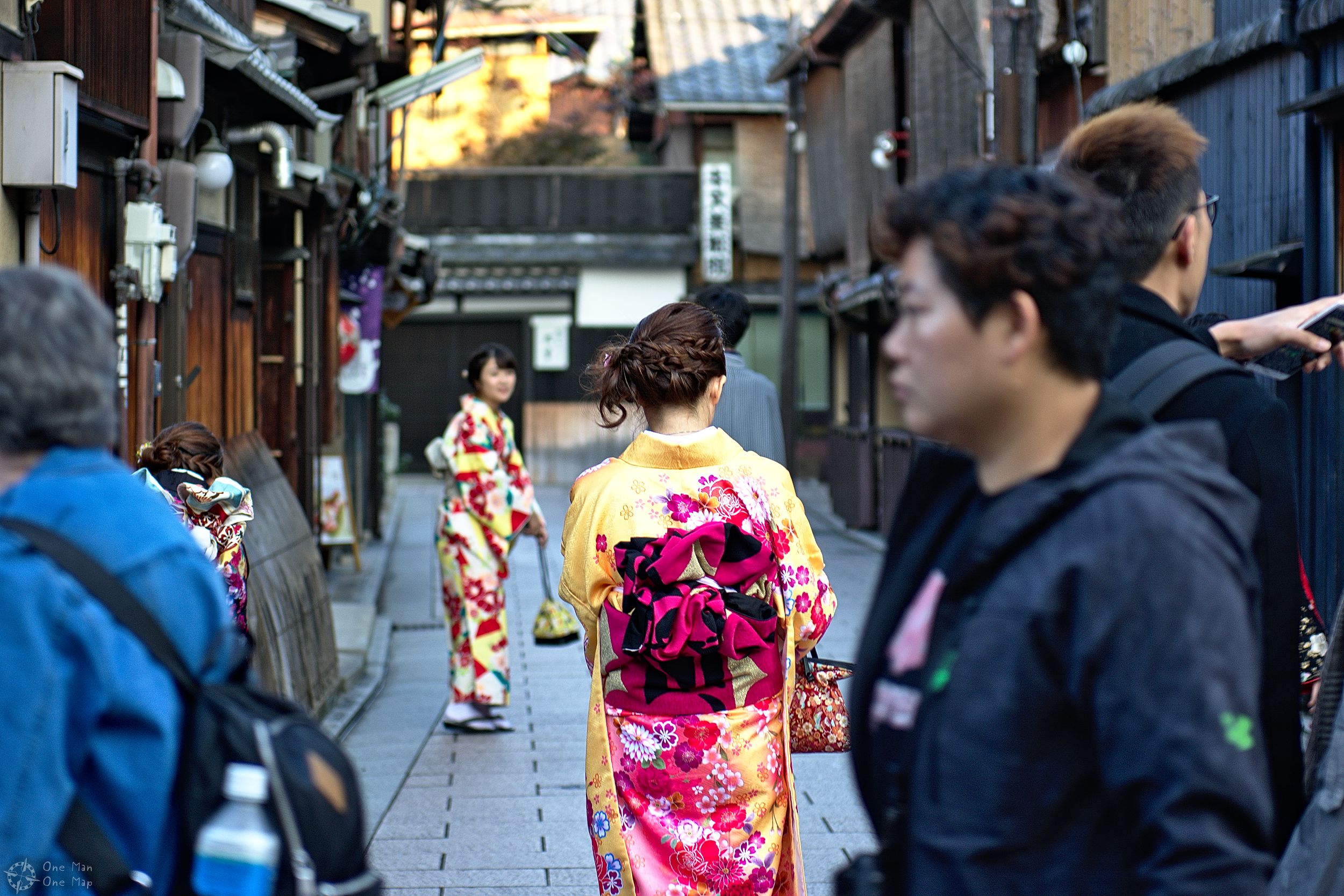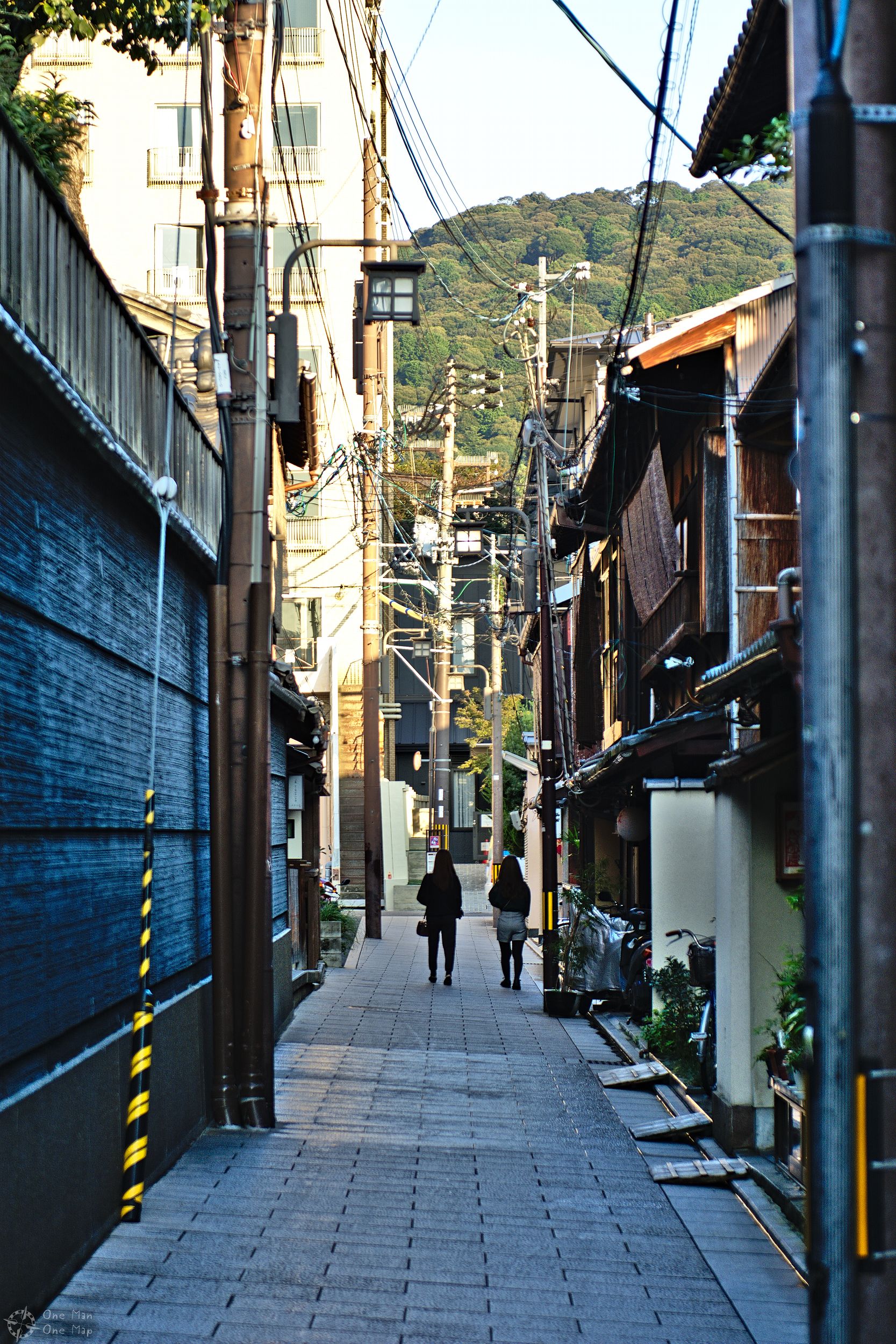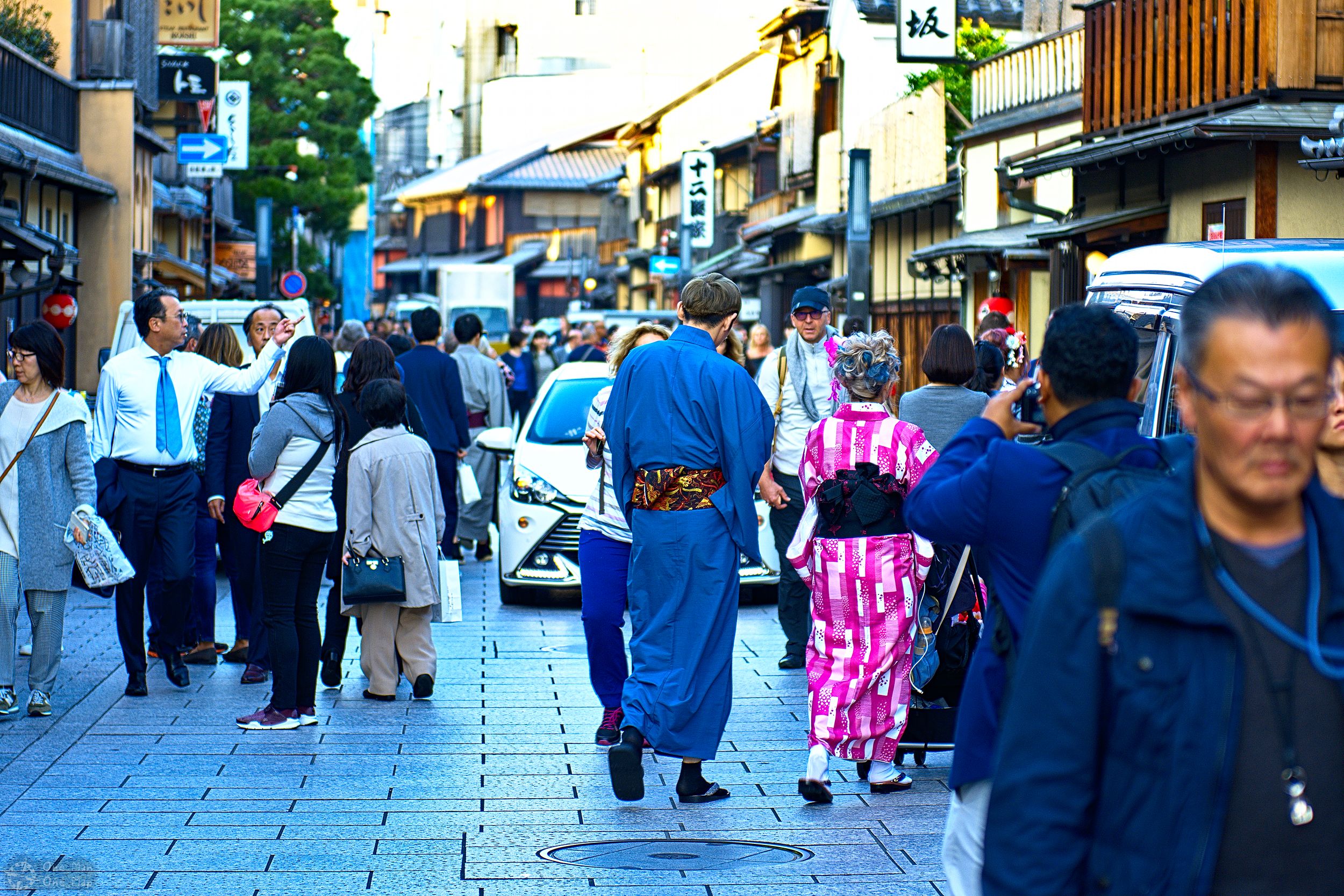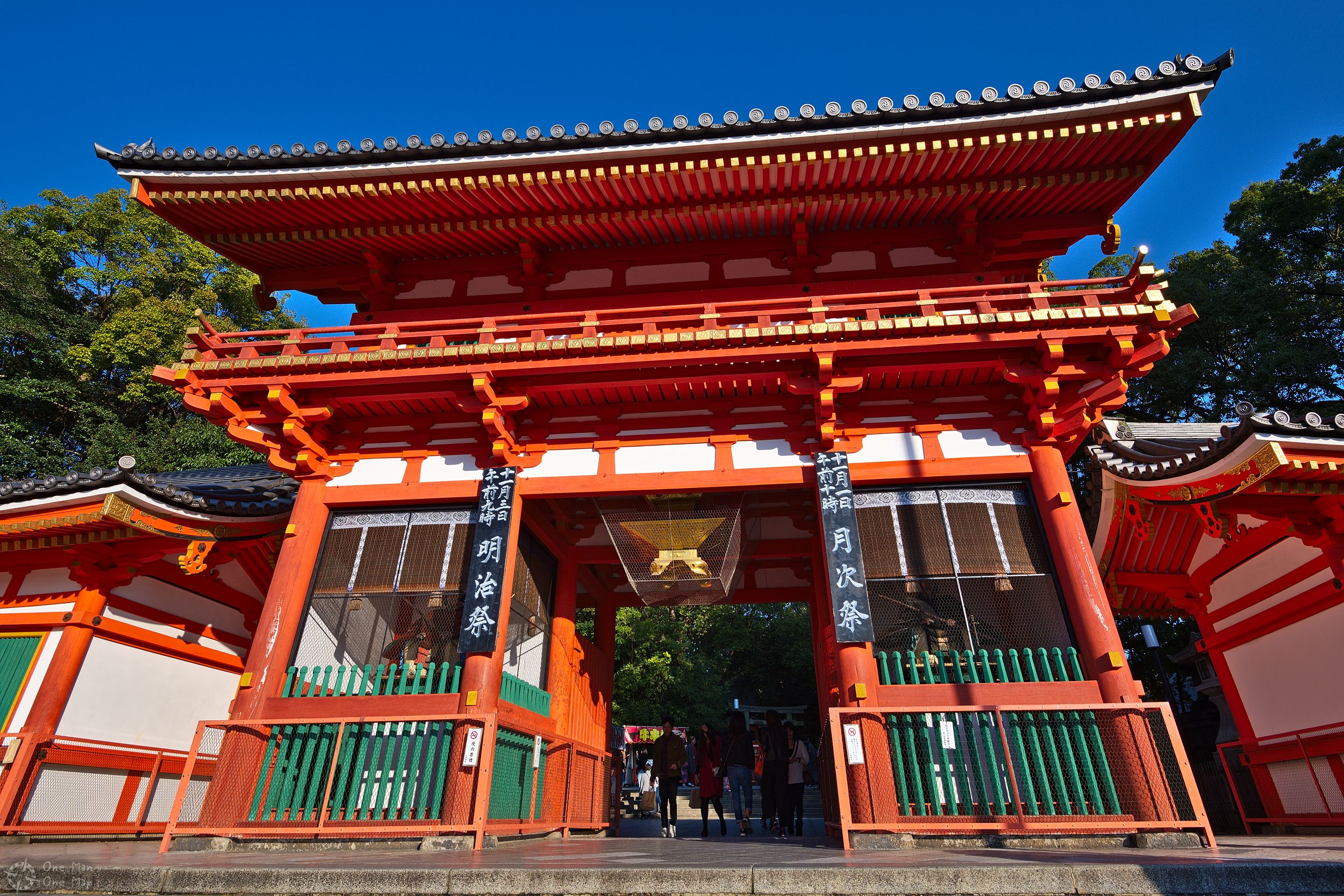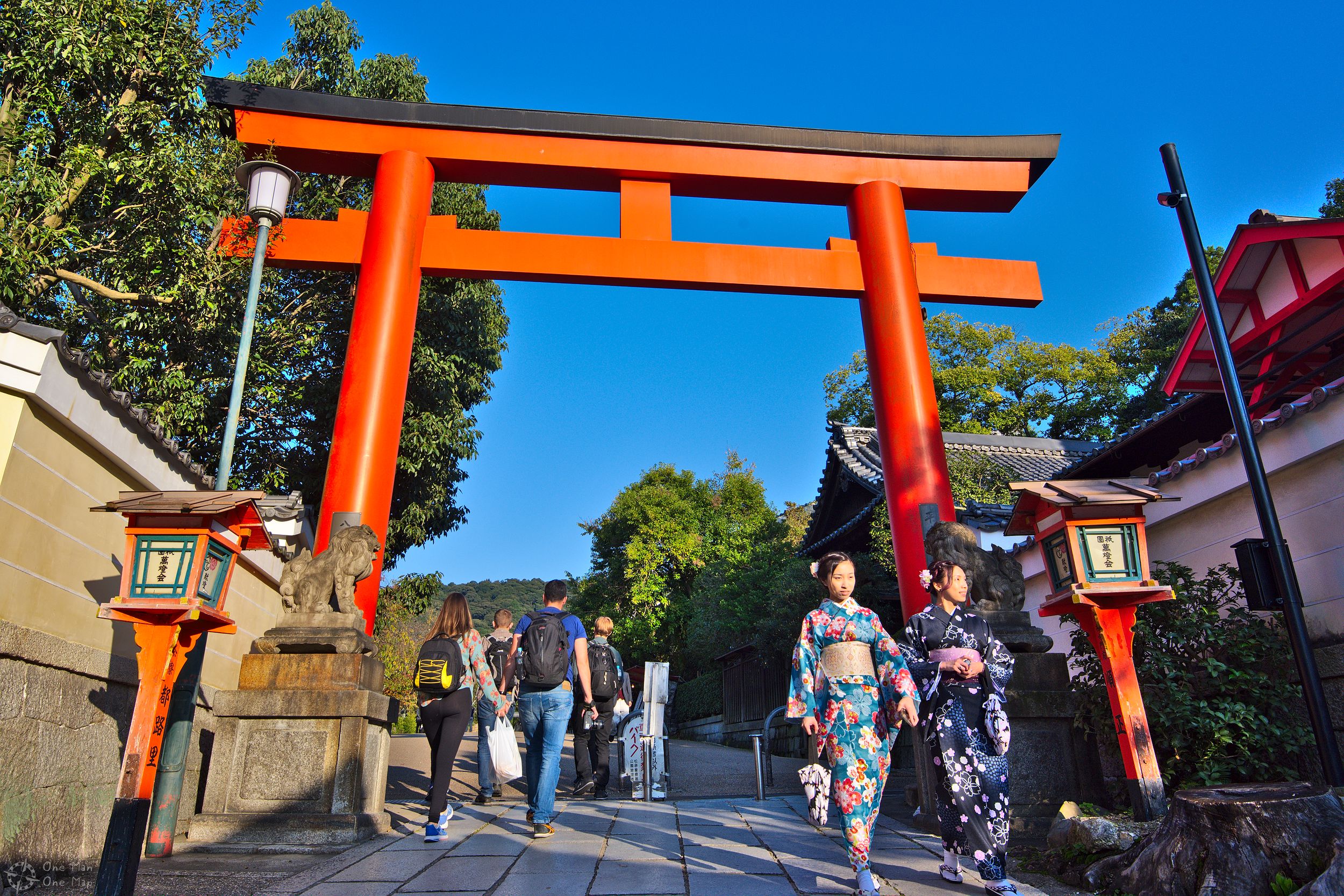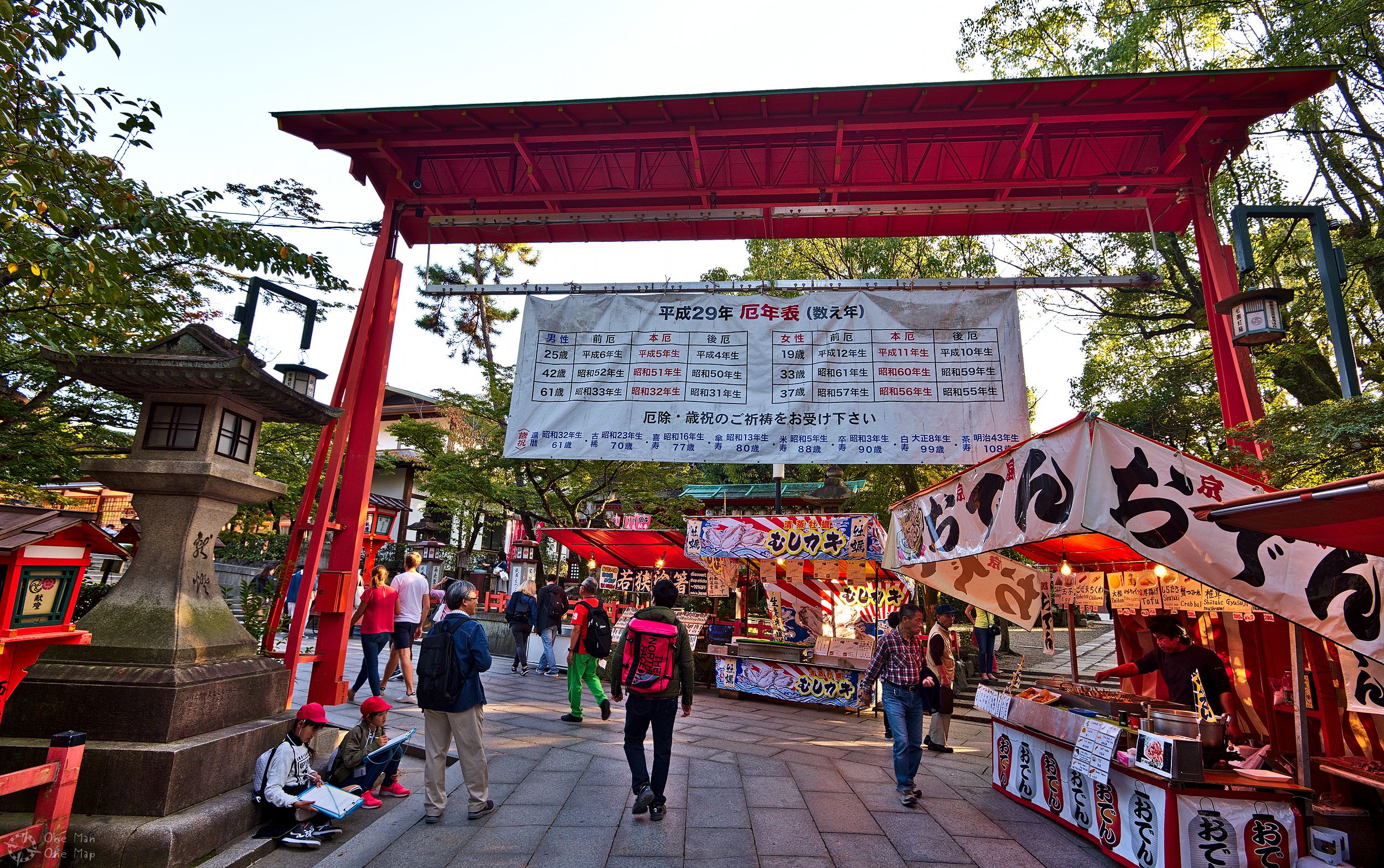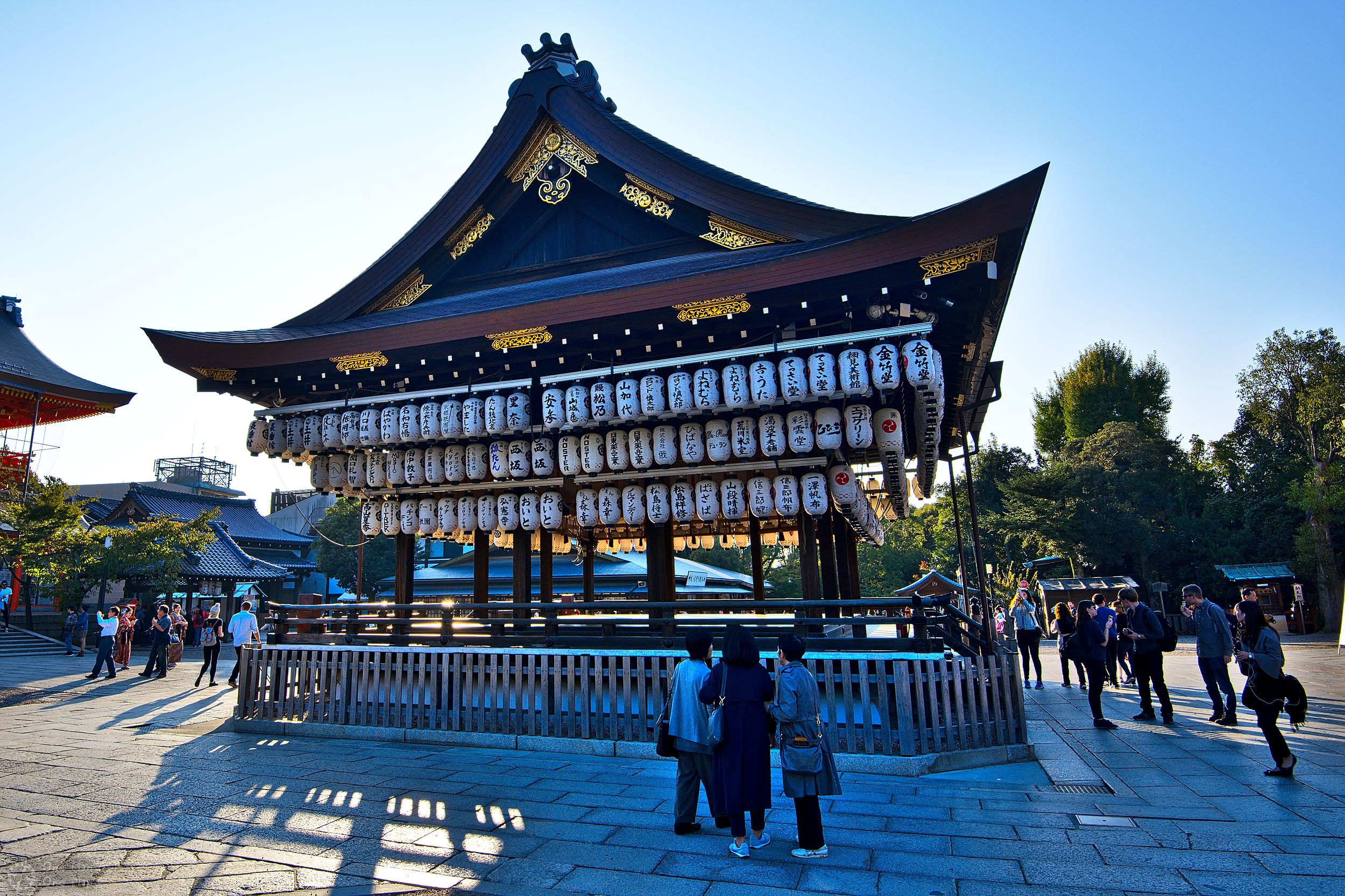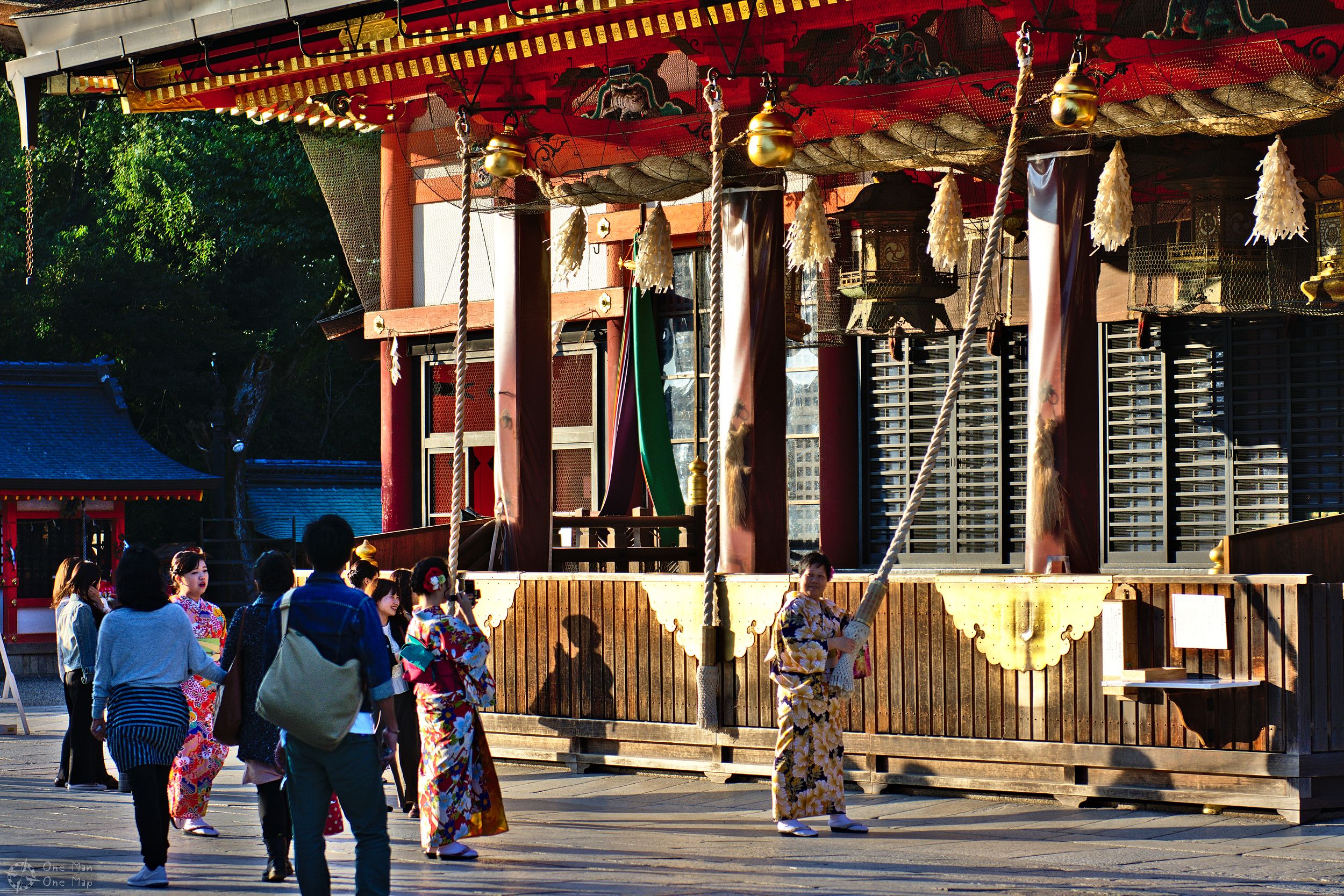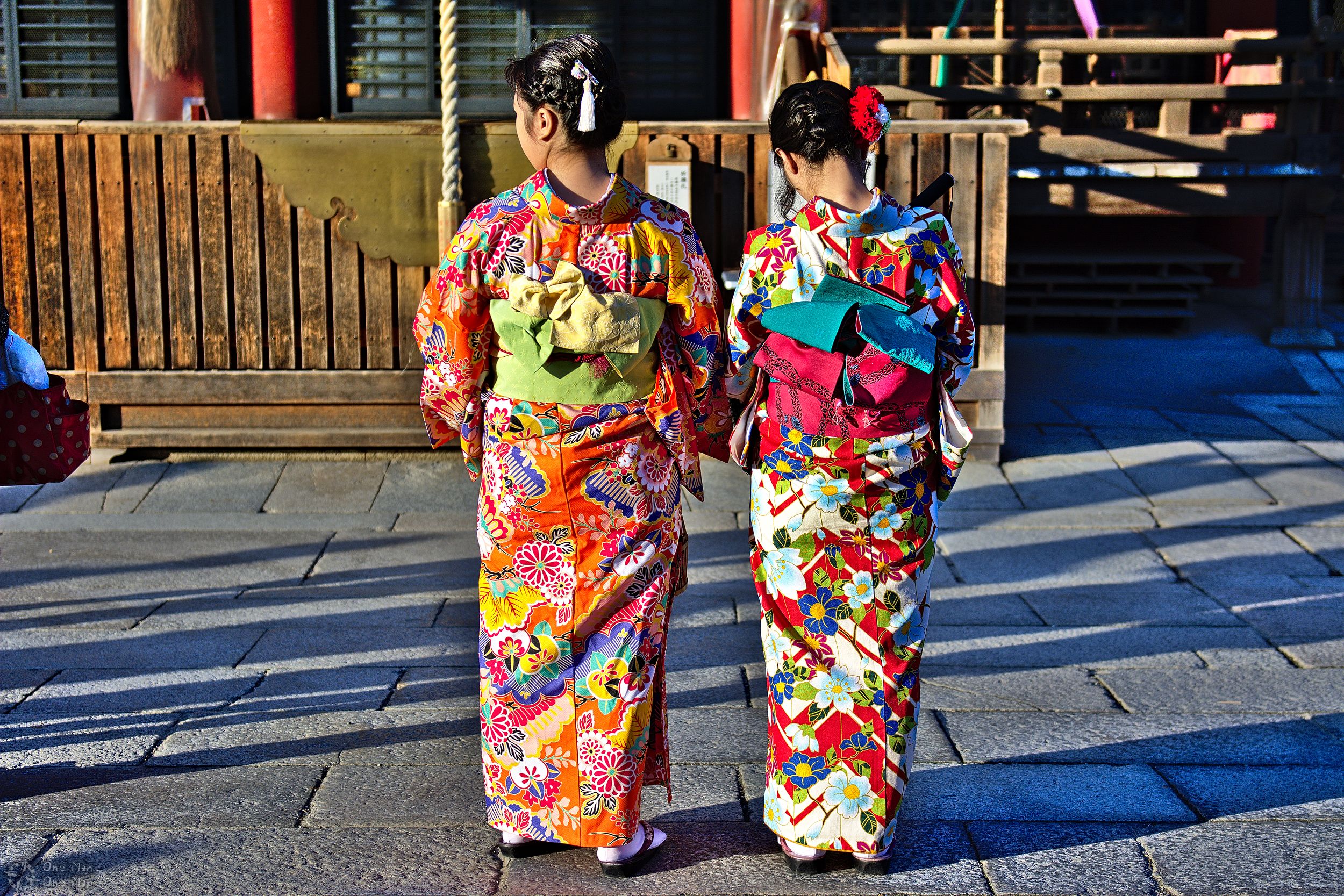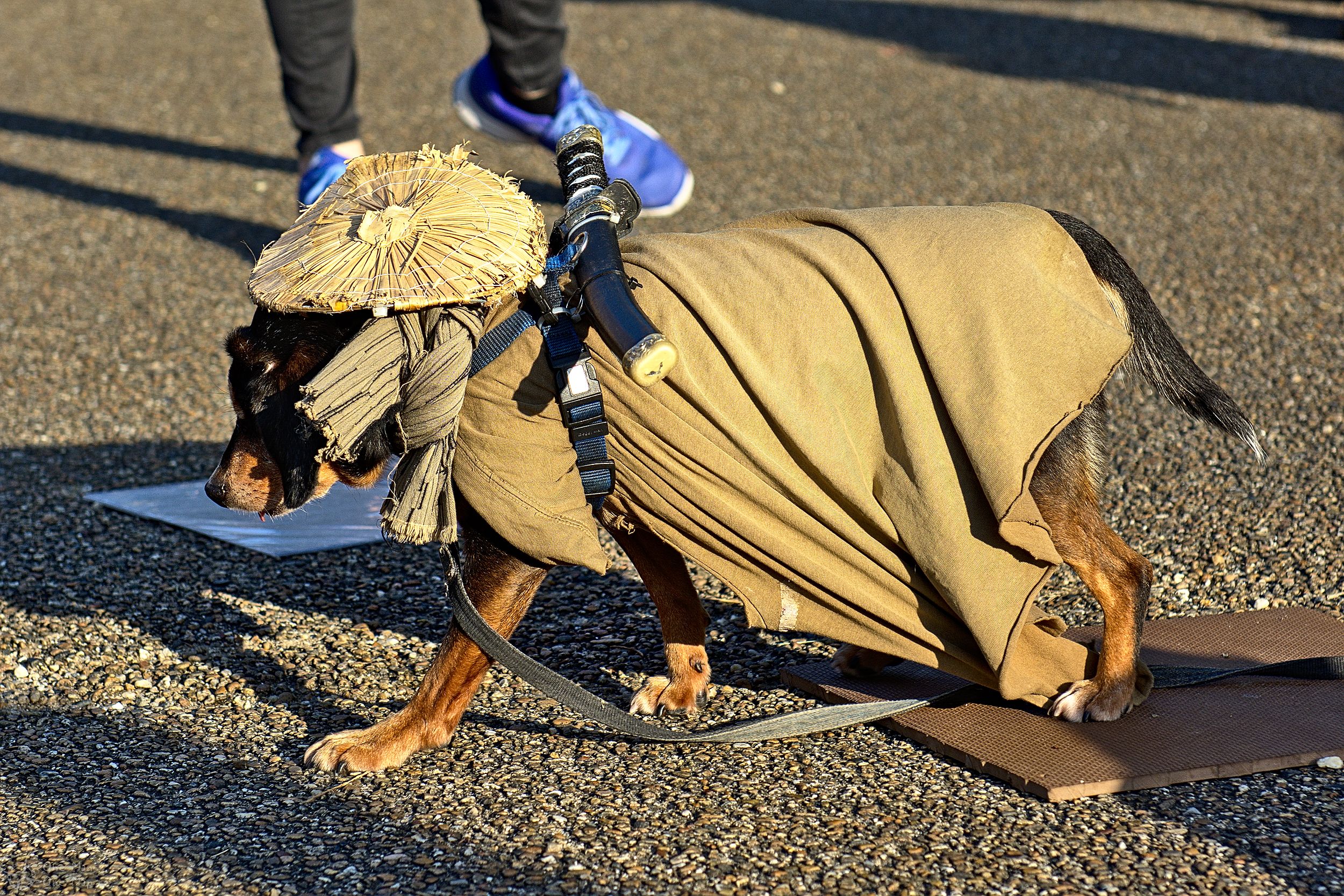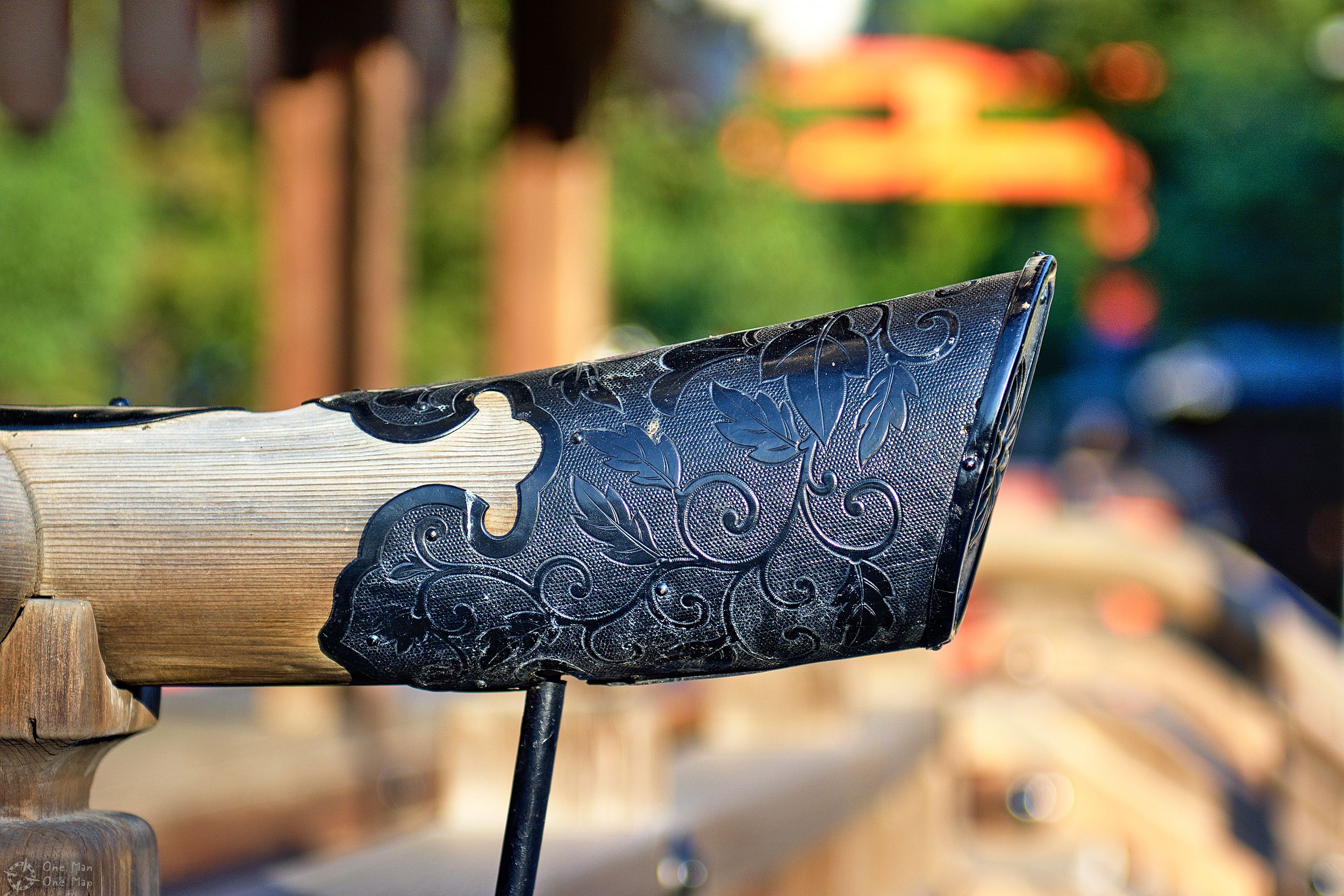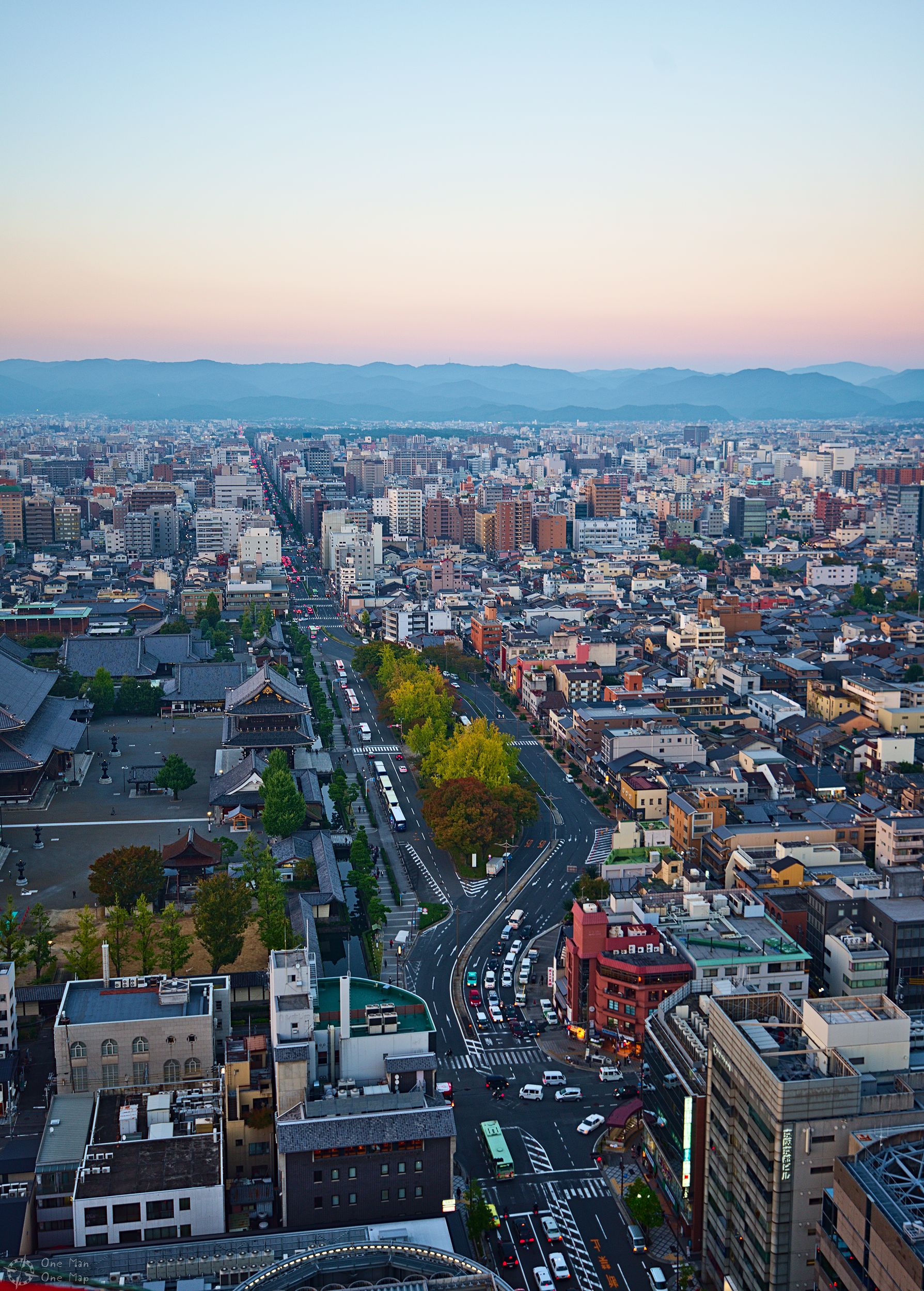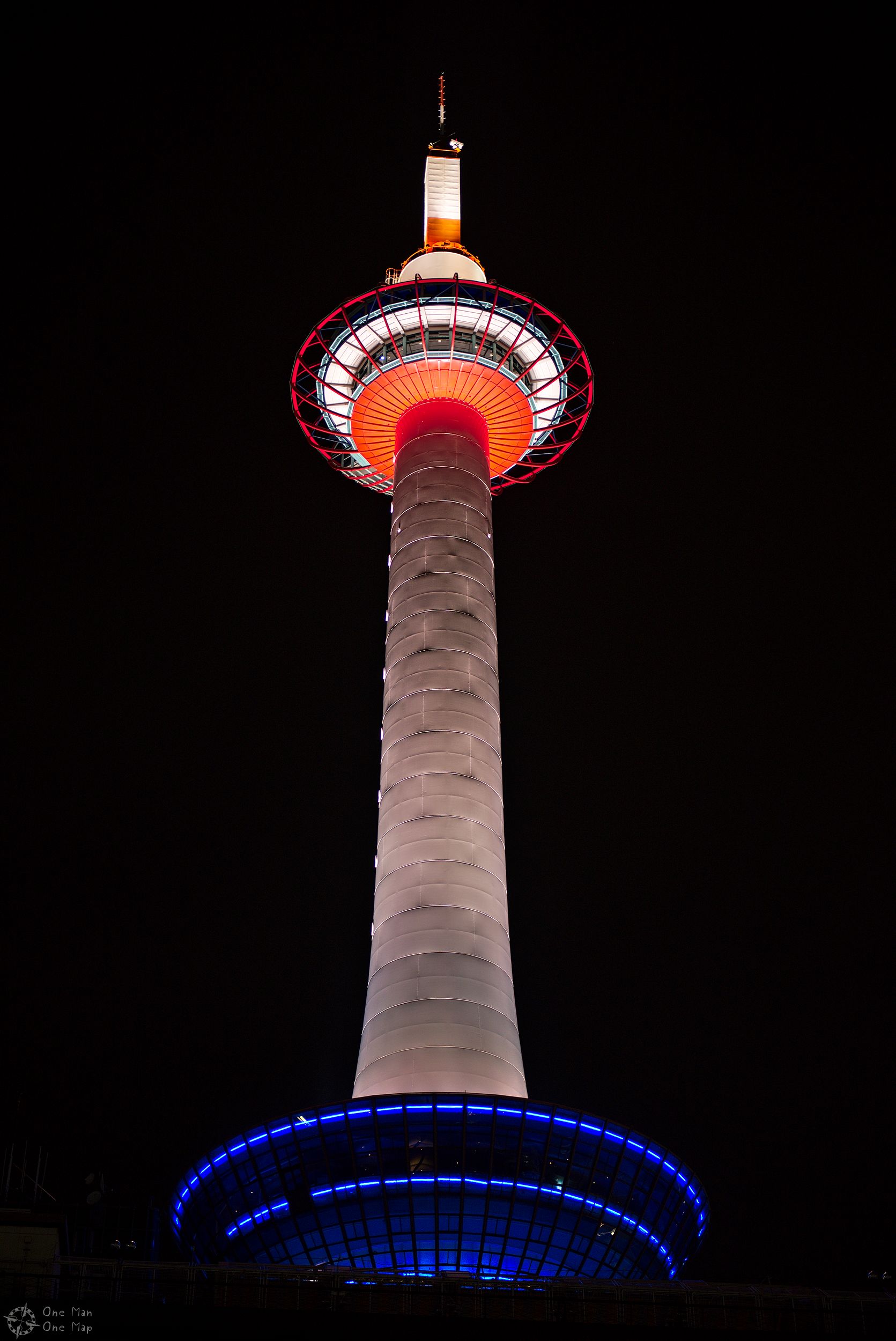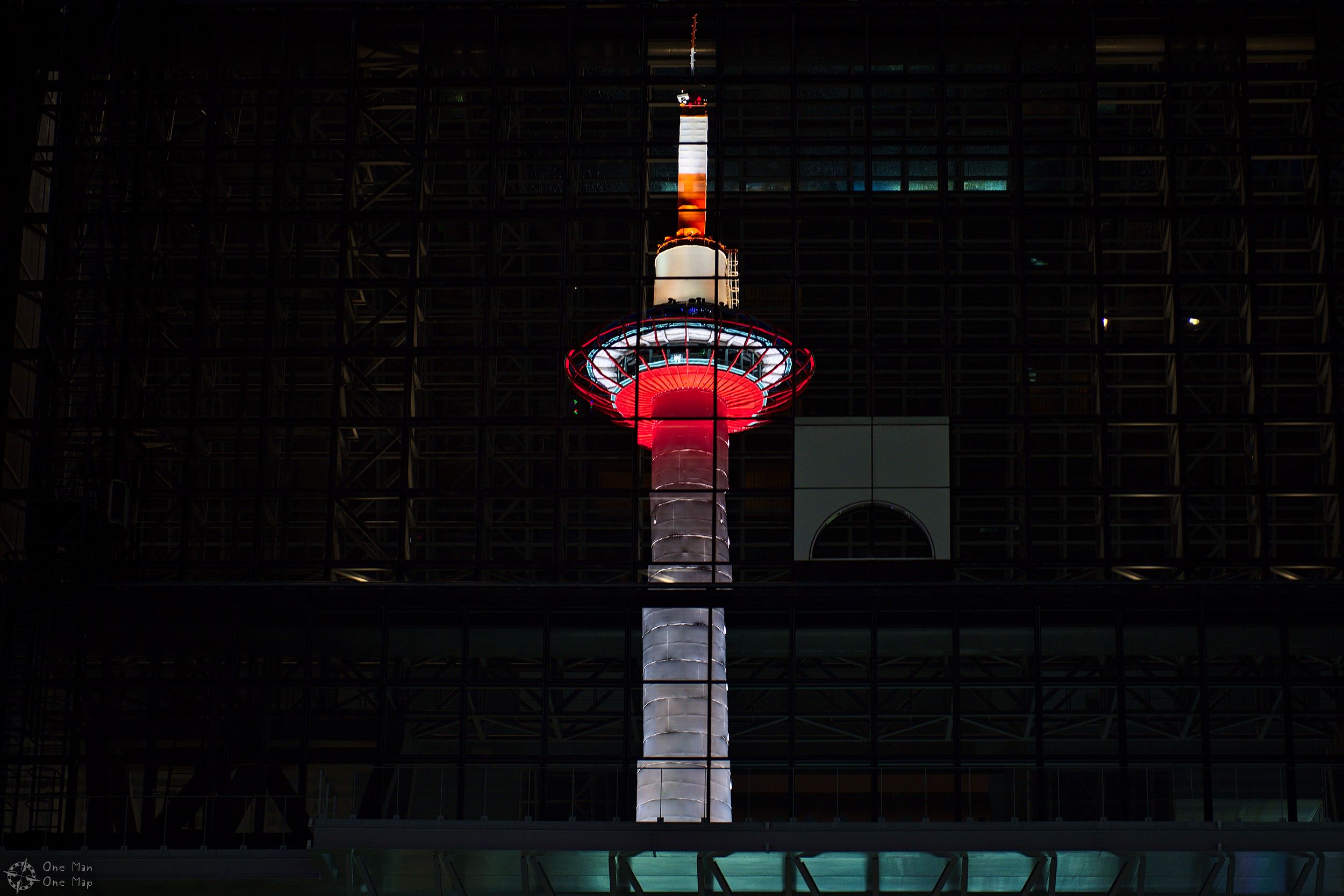Dieser Artikel ist auch auf Deutsch verfügbar. Click here to find out more about Japan!
The headline sounds like the title of an Art House movie, and like a very bad idea anyways. A single day for all of Kyōto, the cultural capital of the country and the actual capital of Japan for 400 years? That could never be enough! It wasn’t, but after all the detours due to the Super Typhoon my time budget had melted from three days down to just one. And I hadn’t even slept in Kyōto, but also still had to make the train journey from Osaka first. A long and hectic day was ahead of me, and good planning was the key to success.
My final plan included the following stops:
- Arrive at Kyōto Central Station
- Take the regional train to Saga-Arashiyama Station (嵯峨嵐山駅)
- Walk to Tenryu Shiseizen-ji Temple(天龍資聖禅寺)
- Walk through the Arashiyama Bamboo Grove
- To Iwatayama Monkey Park (嵐山モンキーパーク) via Togetsukyō Bridge (渡月橋)
- Take the Keifuku Electric Railroad (京福電気鉄道株式会社) to the Kinkaku-ji Tempel (金閣寺), probably the city’s most famous landmark
- Take the bus to Gion (祇園), the hostel and recreation district in front of Yasaka Shrine
- Yasaka Shrine (八坂神社)
- Up onto Kyōto Tower (京都タワー) at sunset
The journey to Kyoto was very easy. The modern Central Station is connected to the Shinkansen network and also to the major regional lines. The entrance hall with its large steel construction is almost a landmark on its own!
Sunrise at Tenryū Shiseizen-ji (天龍資聖禅寺)
The patch of earth this big temple complex stands on was already in high demand for its natural beauty 1200 years ago. Empress Tachibana no Kachiko (橘嘉智子) had a temple built here around 800, and Emperor Go-Saga and his son Emperor Kameyama built the “Imperial Villa on Turtle Mountain” (亀山殿), named after the shape of nearby Mount Ogura. Almost every hill looks like a turtle somehow, but you shouldn’t let that ruin this beautiful story 😉
The 14th and 15th centuries were rather turbulent times for Kyoto and all of Japan. Emperors died, Shōguns rebelled against weak emperors, friends became enemies, enemies became friends. Shōgun Ashikaga Takauji (足利尊氏) had turned on Emperor Go-Daigo (後醍醐天皇), and when the Emperor died, he was forced to appease the spirit of the dead. So the Imperial Villa was turned into the Tenryu-ji Temple (天龍寺, “Dragon in the Sky”) with its own landscaped lake. To cover the immense costs, two merchant ships were built, named after the temple and sold to a merchant.
Religion is a service in Japan, and that’s how this temple was treated too. When the Chinese refused to do trade with regions outside the Sinosphere after 1430, and the Japanese refused to let the Chinese rule them, a compromise was made: the Tenryu-ji Temple was allowed to trade with the Chinese, as long as the Chinese controlled who the successor of the Supreme Abbot would be. This gave the temple a monopoly on trade between Japan and China, and its monks and priests coordinated important trade routes well into the 19th century.
The extensive garden area especially surprised me with its fancy details and beautiful trails in quiet forests. The Japanese really knew how to combine nature and architecture as harmoniously as possible!
The Arashiyama Bamboo Grove
Not far from the Tenryū-ji there is a wooded area full of bamboo plants, a rare sight by Japanese standards. And where there is a patch of land which is both special and easy to get to, there are also hordes of tourists …
The whole area was not exactly in the best state after the Super Typhoon. Many plants had been overturned or even uprooted.
Arashiyama and the Togetsukyō Bridge (渡月橋)
Arashiyama is served by three train stations and several bus lines, coaches not even included, so it is very easy to get to. Tourists flooded the park and the streets between the historic buildings, as usual in rented kimonos.
If you really wanted to roll in style, you rented a rickshaw with a human tractor and let him pull you past the souvenir stands 😉
The Keifuku Electric Railroad (京福電気鉄道株式会社)
As an old railroad enthusiast I didn’t cover the distance between Arashiyama and the Kinkaku-ji Temple, my next stop, by bus. The Keifuku Electric Railroad operates two tram lines in Kyoto. As an European you probably wouldn’t call these two small railway lines “trams”, though.
Besides the newer, typical Japanese vehicles there were also several historic vehicles in use. Payment was made with the usual contactless payment cards (SUICA, PASMO etc.), which I needed for other means of transport anyways.
The Kinkaku-ji Tempel
To be honest: I almost refrained from coming here because I had heard of the tourist crowds. It is the most famous landmark of the city and also one of Japan’s most famous landmarks, after all. But I was convinced by the beautiful pictures on the Internet, and decided to add another pictures of the Golden Pavilion to the existing billion pictures other people have already taken 😉
I have to admit that the pavilion at the lake is quite an impressive sight. It would certainly be very quite and calming too, if it wasn’t for all the tourists not visible in the photos. The rest of the complex couldn’t keep up with the first impression, especially not compared to the Tenryū-ji.
Time for temple entertainment 😉 If you’ve read the other posts about Japan, you already know the drill. This time it came in the form of a “game of skill”, and there was a long line of tourists waiting for their turn. Of course most missed and tried again and again. Certainly a much more productive source of income than a simple wishing well!
The number “100” had been written on this machine a full five times – probably too many tourists had problems putting in the right amount to get a prophecy. Well, I thought, let’s see what the future will bring …
Everything would be fine as long as I didn’t overdo it, especially by rushing on a trip… great. I had already started the day exactly like I wasn’t supposed to! 😯
Gion (祇園)
I continued to Gion by bus. This district had formed in front of the Yasaka Shrine over many centuries to satisfy the needs of many travelers and pilgrims. Over time it became one of the largest and most exclusive Geisha districts in Japan, although the Geisha in Kyoto call themselves Geiko, which means “Woman of the Arts”.
Many narrow streets branched off of the few wide roads. True Geisha in the traditional sense didn’t exist anymore, but that didn’t really matter – it felt like this place had the highest concentration of rented kimonos in all of Japan 😯
The Yasaka Shrine (八坂神社)
Just before sunset I entered the Yasaka Shrine complex. This is one of the most important, largest and oldest shrines in Japan. Many shrines were founded after the year 800 or much later, but the first stone of the Yasaka Shrine was laid in 656. Due to the proximity to the imperial family it gained more and more importance, and more buildings and gardens were added.
If you start at the main gate you can walk in a straight line for more than half a kilometer before the site ends at a mountainside. If you continue walking, after a few kilometers you will end up in the district of Yamashina (山科区) on the other side of the mountain.
To borrow a kimono in Kyōto, ring the big bell and send a picture home to the relatives – obviously the dream of many elderly ladies.
Inu-Bushi (侍犬), Samurai’s best friend. His master was sitting next to him, was a musician and sold CDs. But of course the main attraction was the dog, it even has its own Facebook page 😉
Kyōto Tower
Not something you see every day: an observation tower on the roof of a nine-storey hotel. Due to the complicated statics it is not as large as other towers, the top is at only 131 meters and the observation deck at just 100 meters. Nevertheless the view was very nice. On clear days you can see Osaka about 40 kilometers away.
At night the tower was reflected very nicely in the glass facade of the main station!
Next stop: Hiroshima! 🙂
This post was written by Simon for One Man, One Map. The original can be found here. All rights reserved.

